Special Report
The Worst Hurricanes on Record
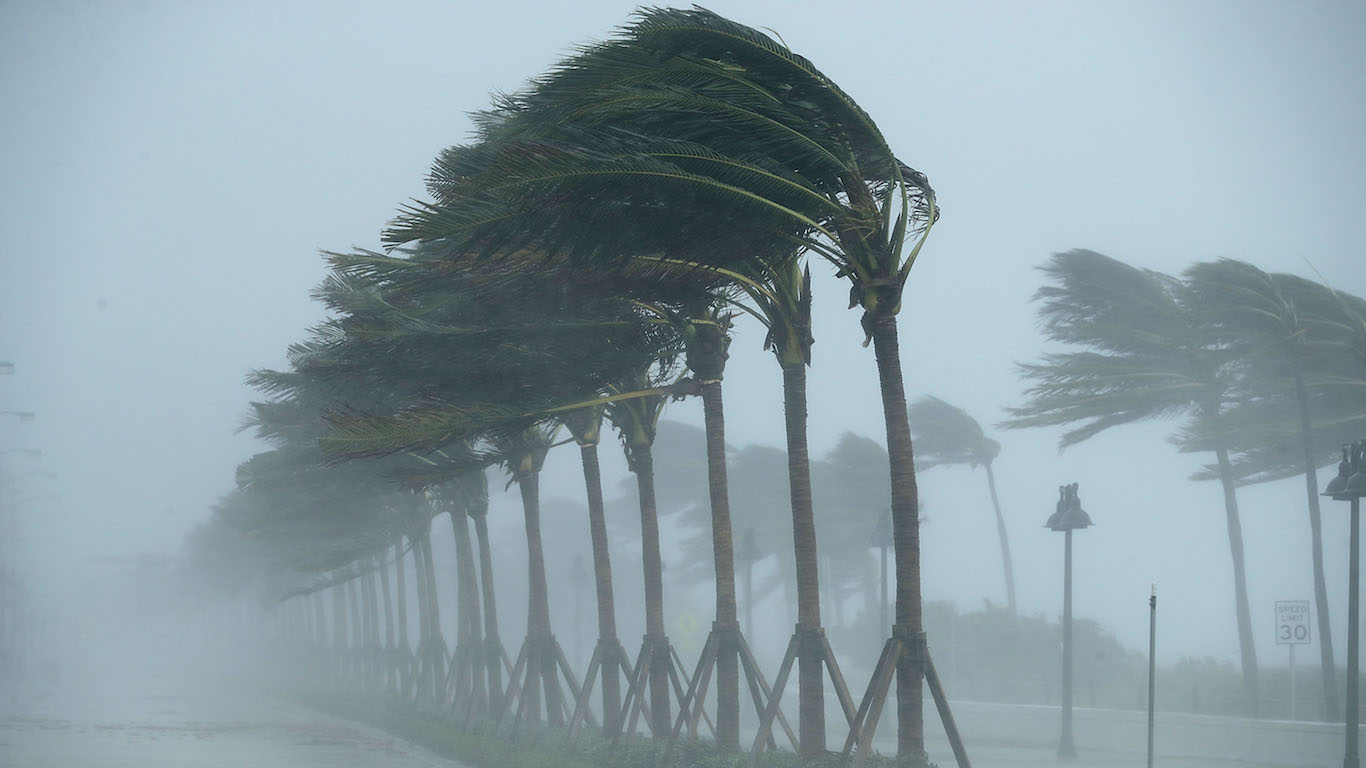
Published:
Last Updated:

On September 7, Hurricane Ian entered the southeastern Gulf of Mexico as a Category 3 hurricane. Reports from the National Hurricane Center showed the storm strengthening, and at last record had maximum sustained winds of 120 mph. The hurricane is expected to make landfall Wednesday afternoon somewhere between Fort Myers and Tampa. Ian represents the first major storm of the 2022 hurricane season, which has been relatively quiet so far. But when it comes to hurricanes, as history has shown, it only takes one disastrous storm to make it a year to remember.
To determine the most powerful hurricanes of all time, 24/7 Wall St. used data from NOAA dating back to 1851 to rank tropical cyclones based on estimated central pressure at time of landfall for all hurricanes. Hurricanes were ranked according to their minimum pressure in millibars, where one millibar is the equivalent of 100 pascals in pressure. The lower a storm’s minimum pressure, the stronger the storm is. For context, air pressure is 1,013 millibars at sea level. The storms on this list had minimum pressure of 950 millibars or lower.
The frequency of tropical cyclones in a given year is rarely an indication of how intense the hurricanes may be when they make landfall — that is, how destructive they can be. Some of the most powerful storms, like Hurricane Andrew in 1992, for example, hit during one of the slower hurricane seasons of the past several decades. The strength of a hurricane is difficult to accurately predict, and the most intense storms on record vary heavily by decade, deadliness, and destructiveness.
In addition to high winds, hurricanes can batter areas with heavy rainfall, storm surges, and inland flooding. Many of the storms on this list have been the catalyst for some of the worst floods in American history.
Click here to see the most powerful hurricanes of all time
Click here for our detailed findings and methodology

[in-text-ad]

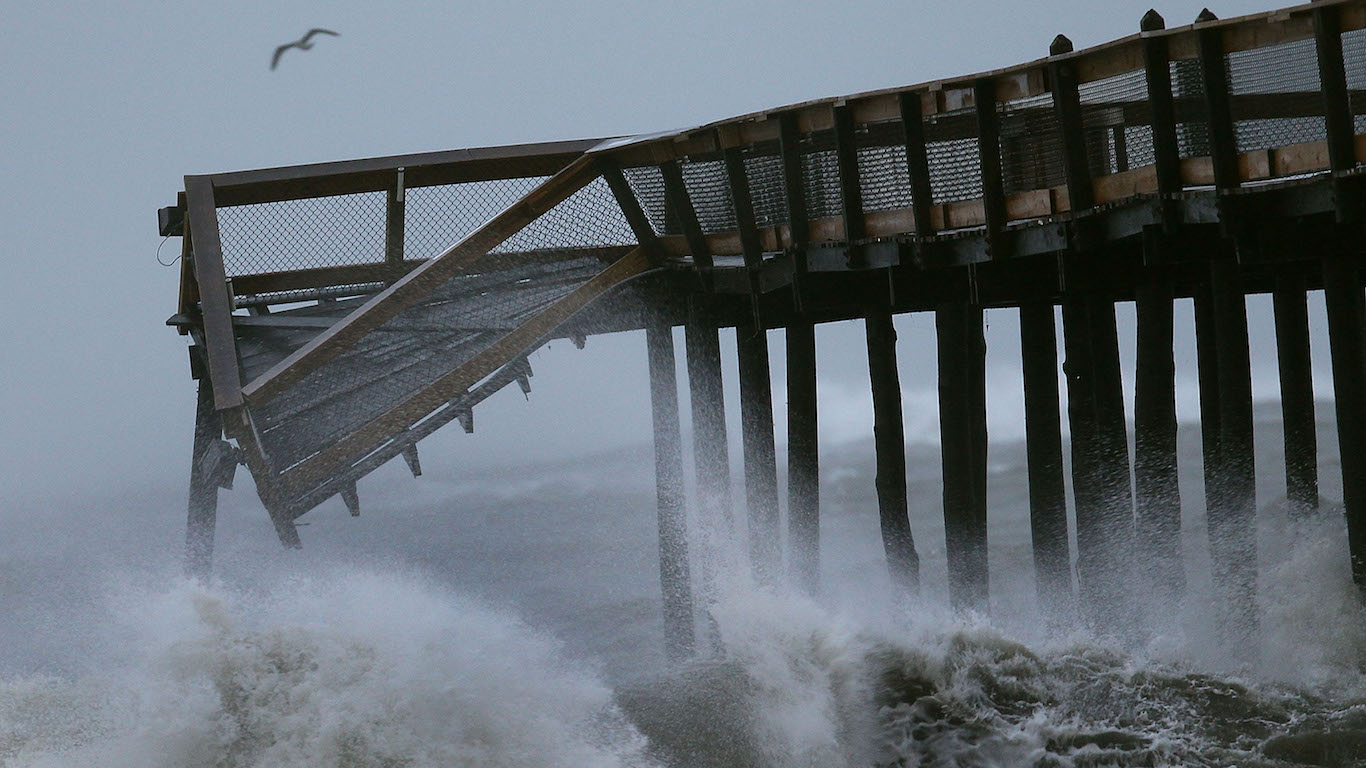
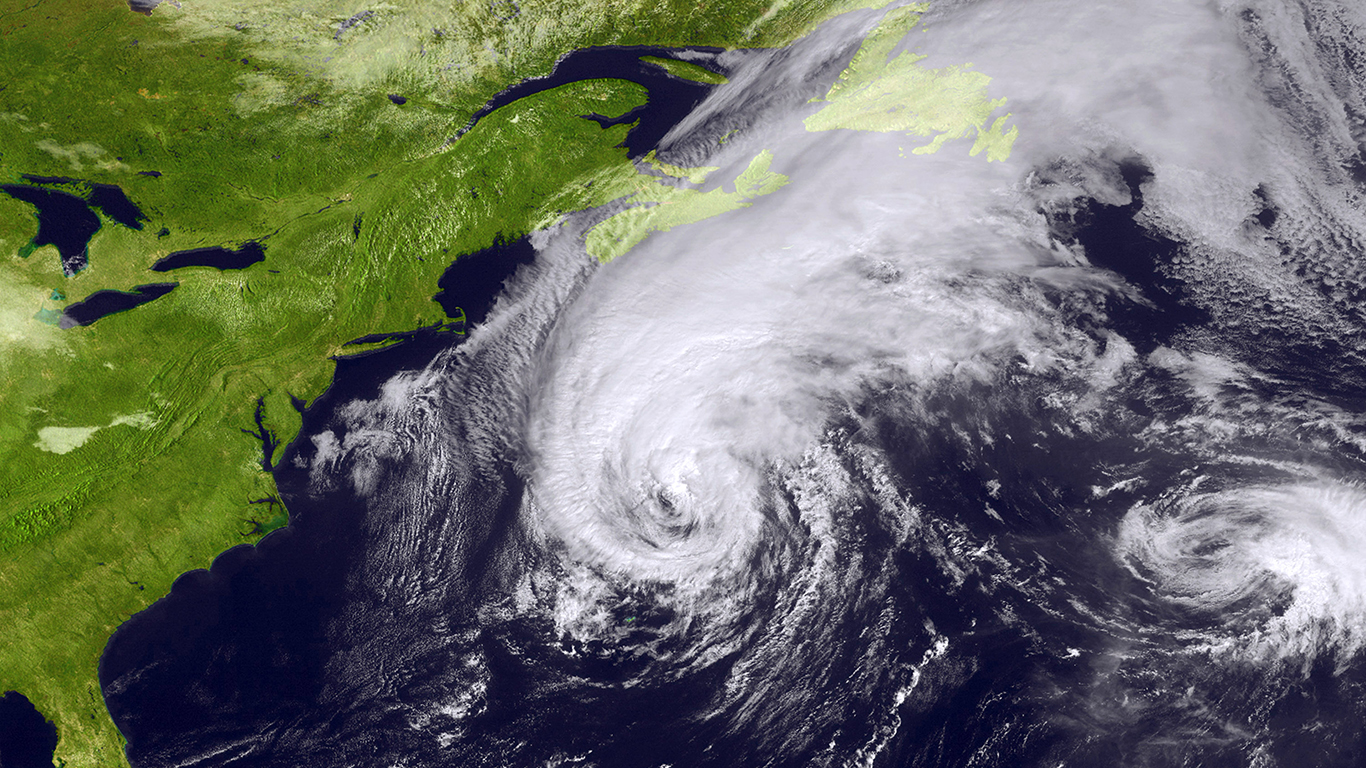


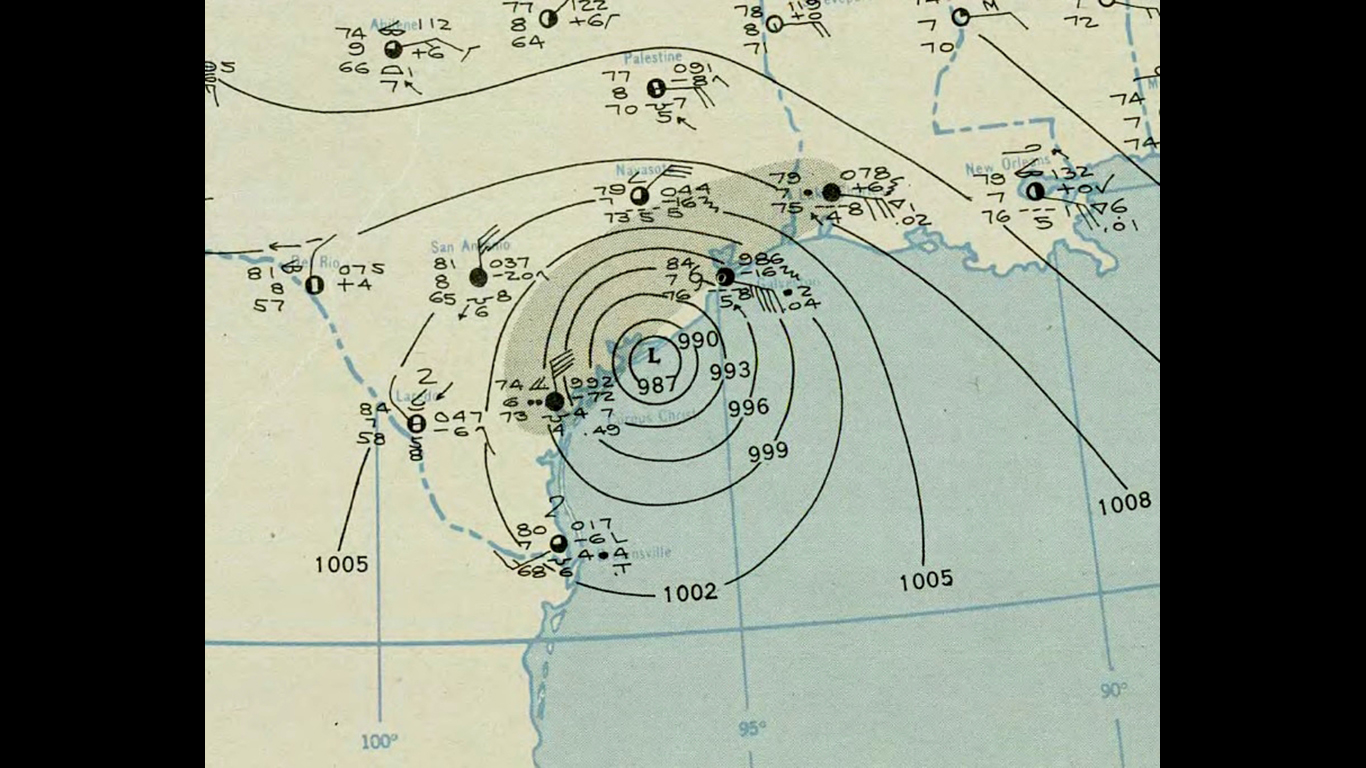
[in-text-ad-2]
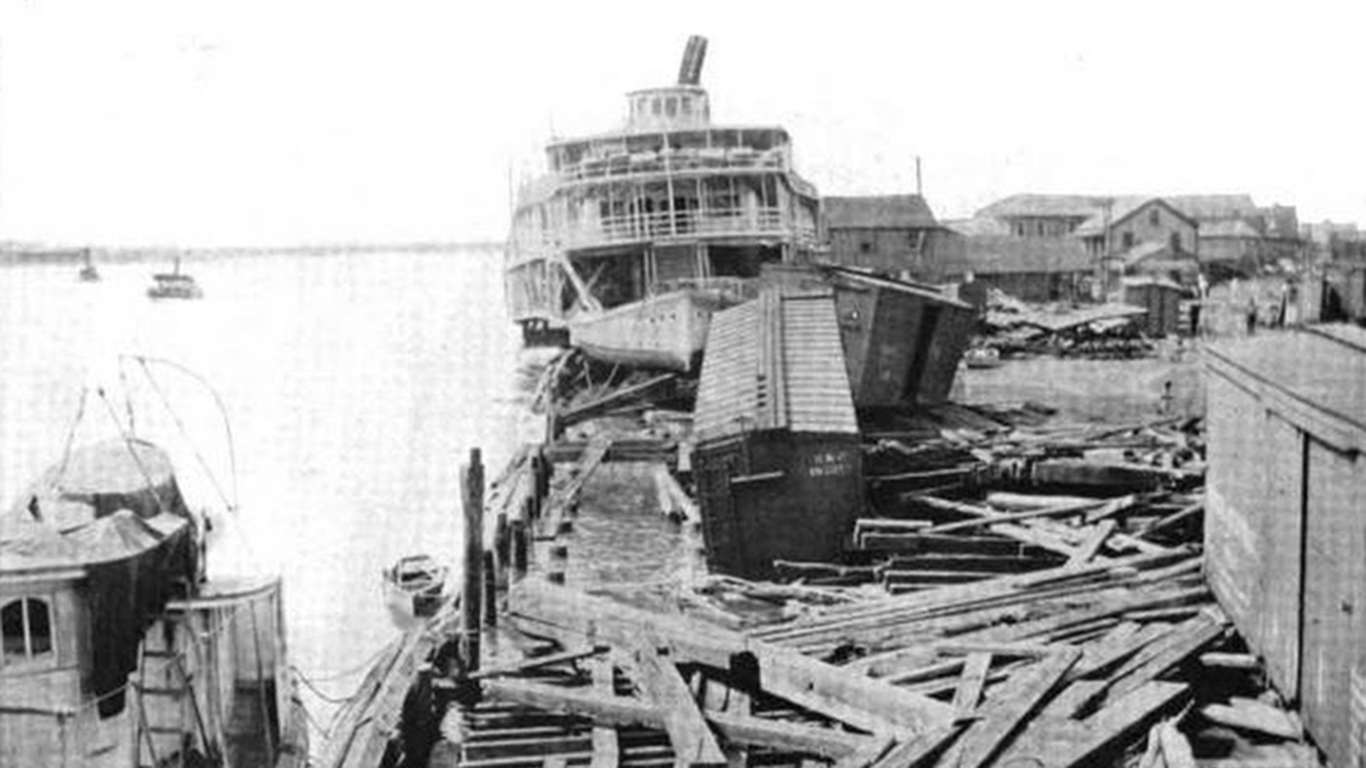
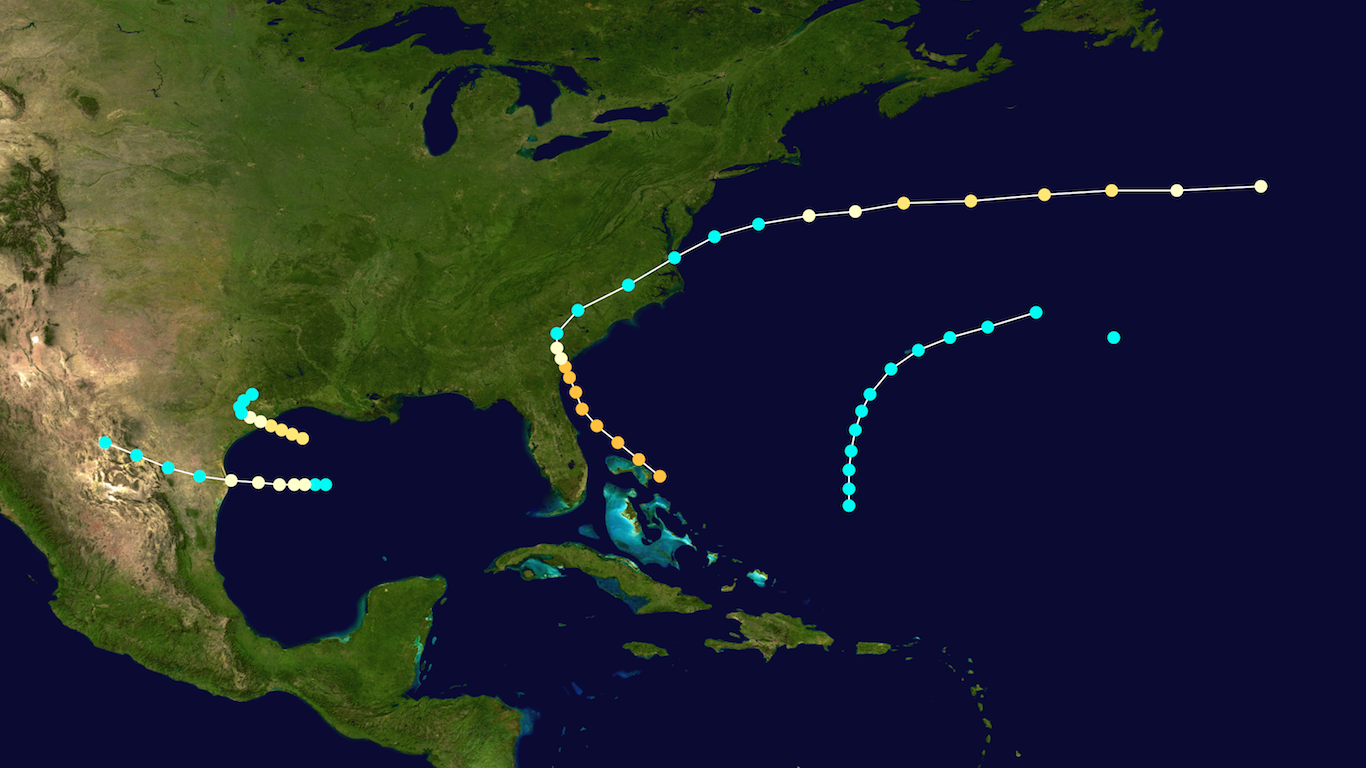

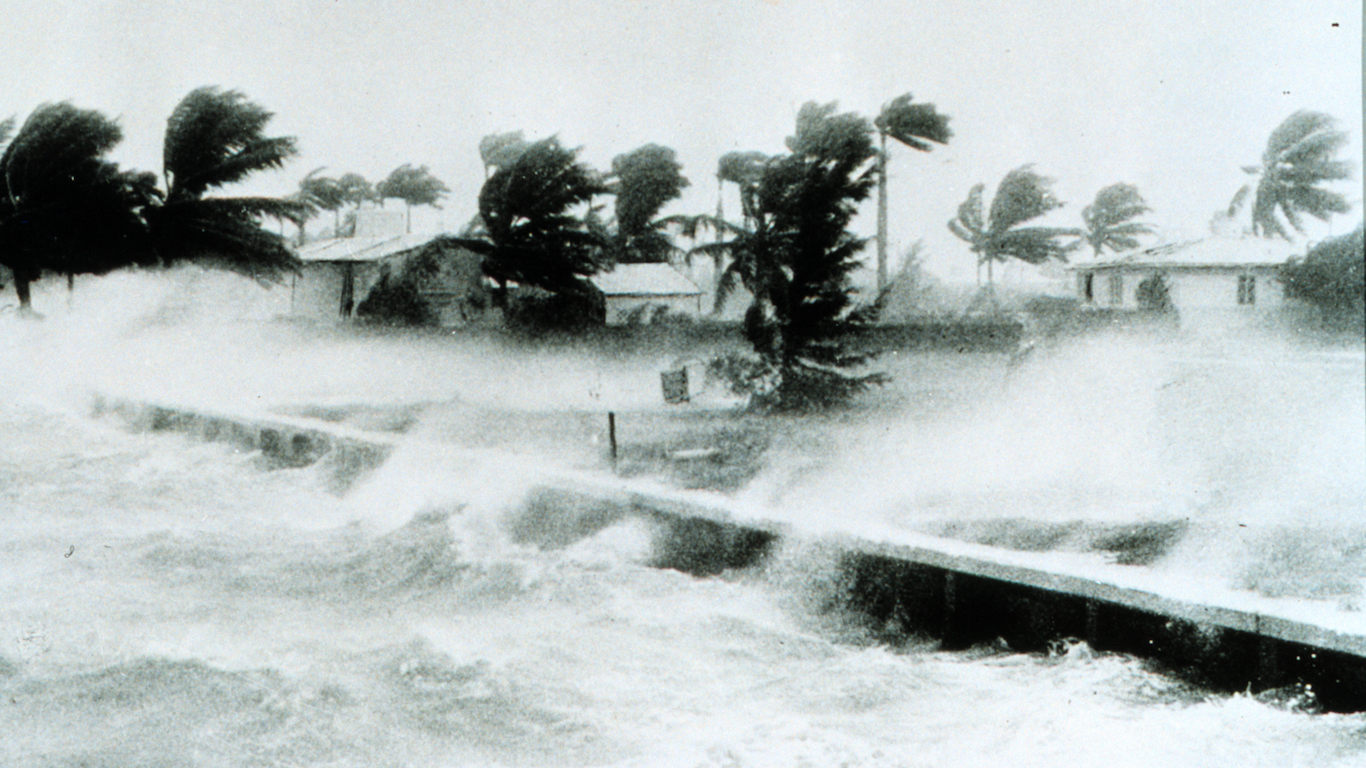
[in-text-ad]
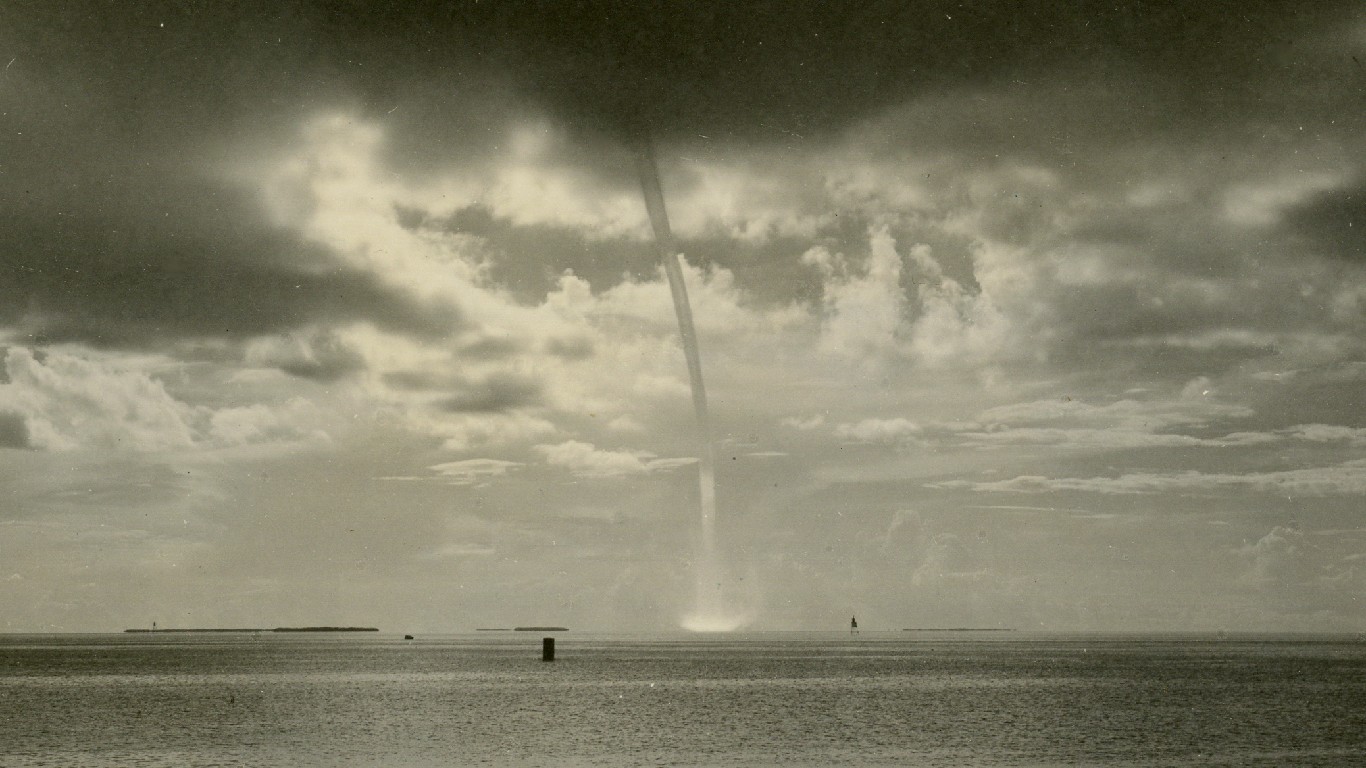
59. 1944 Cuba-Florida Hurricane (October, 1944)
> Minimum pressure millibars: 949
> Max. wind speed at landfall: 105 mph
> Max. wind speed measured: 125 mph
> Affected area: North Carolina, Long Island, New England, eastern Canada


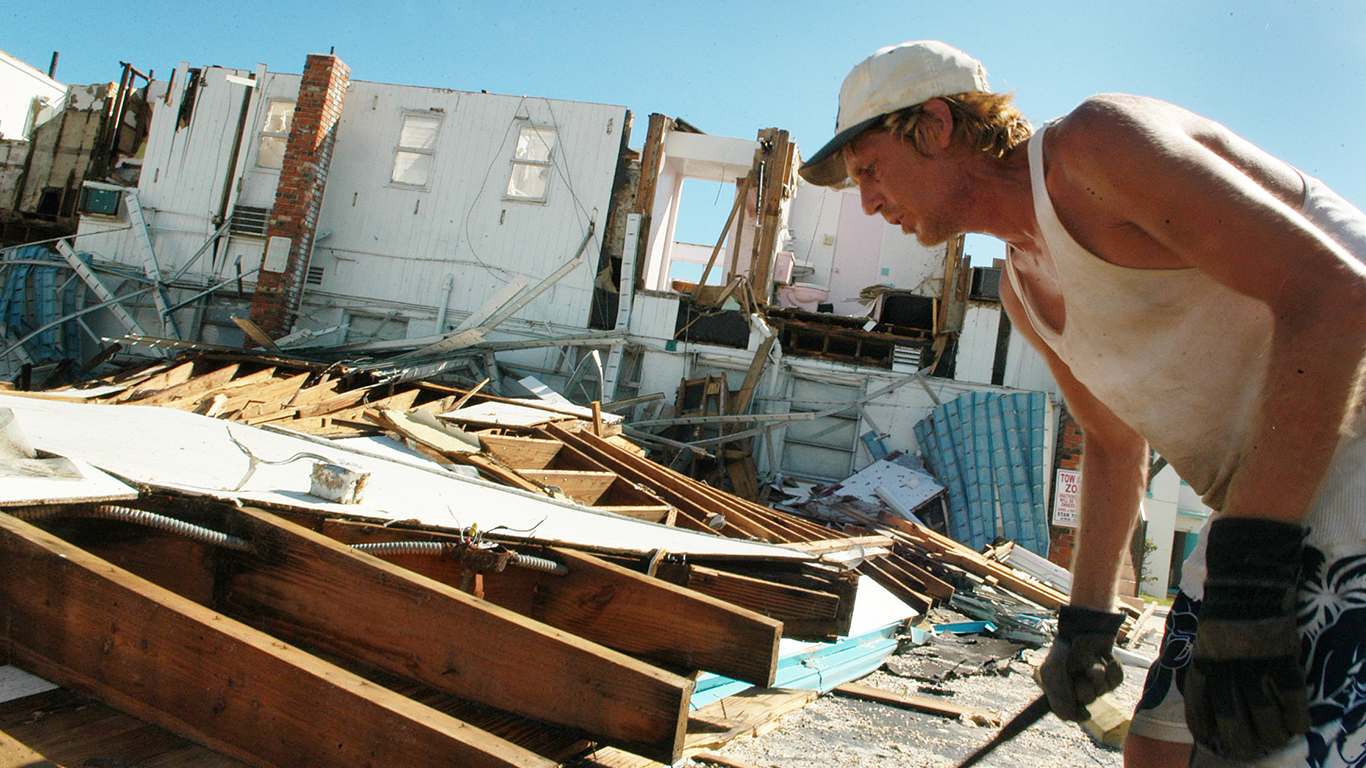
56. Hurricane Frances (September, 2004)
> Minimum pressure millibars: 948
> Max. wind speed at landfall: 110 mph
> Max. wind speed measured: 125 mph
> Affected area: Leeward Islands, Turks and Caicos Islands, Bahamas, Florida, North Carolina
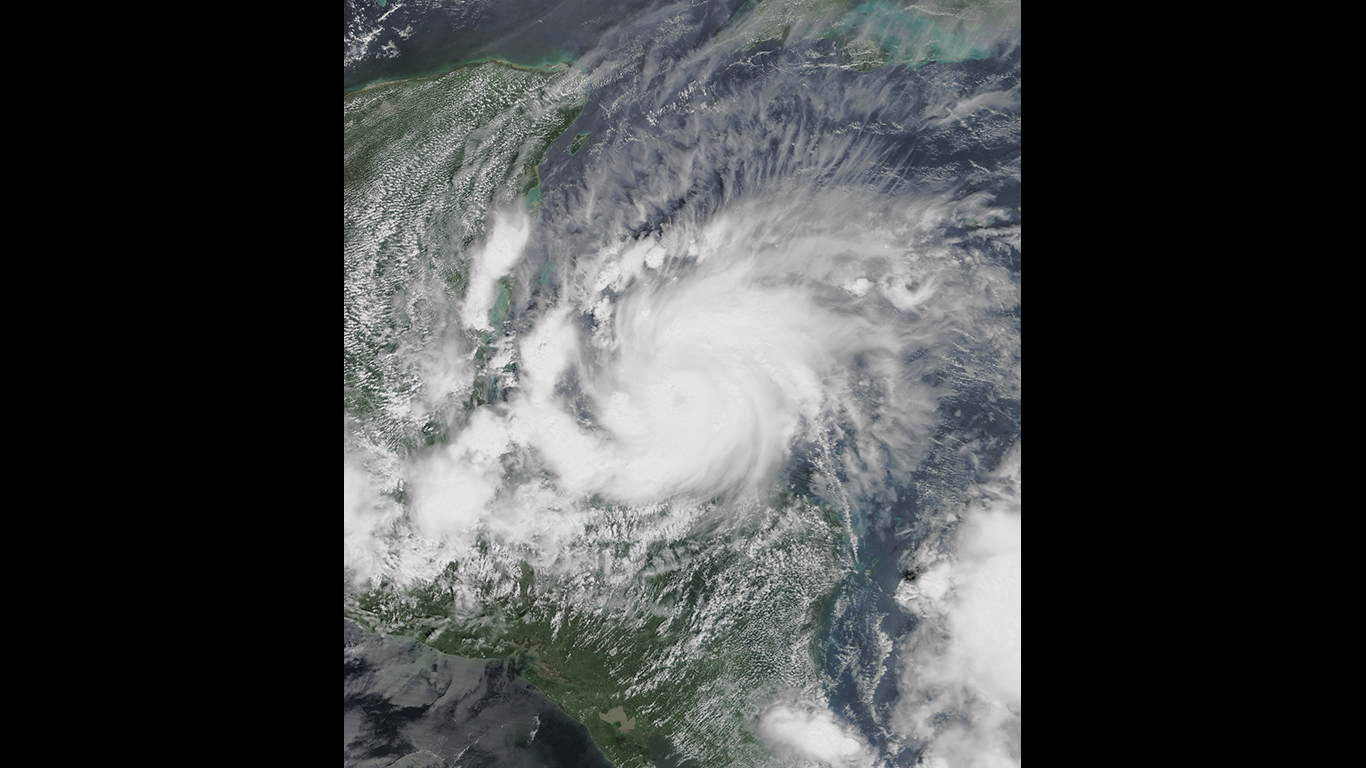
55. Hurricane Iris (October, 2001)
> Minimum pressure millibars: 948
> Max. wind speed at landfall: 125 mph
> Max. wind speed measured: 125 mph
> Affected area: Lesser Antilles, Jamaica, Belize, Guatemala, Dominican Republic
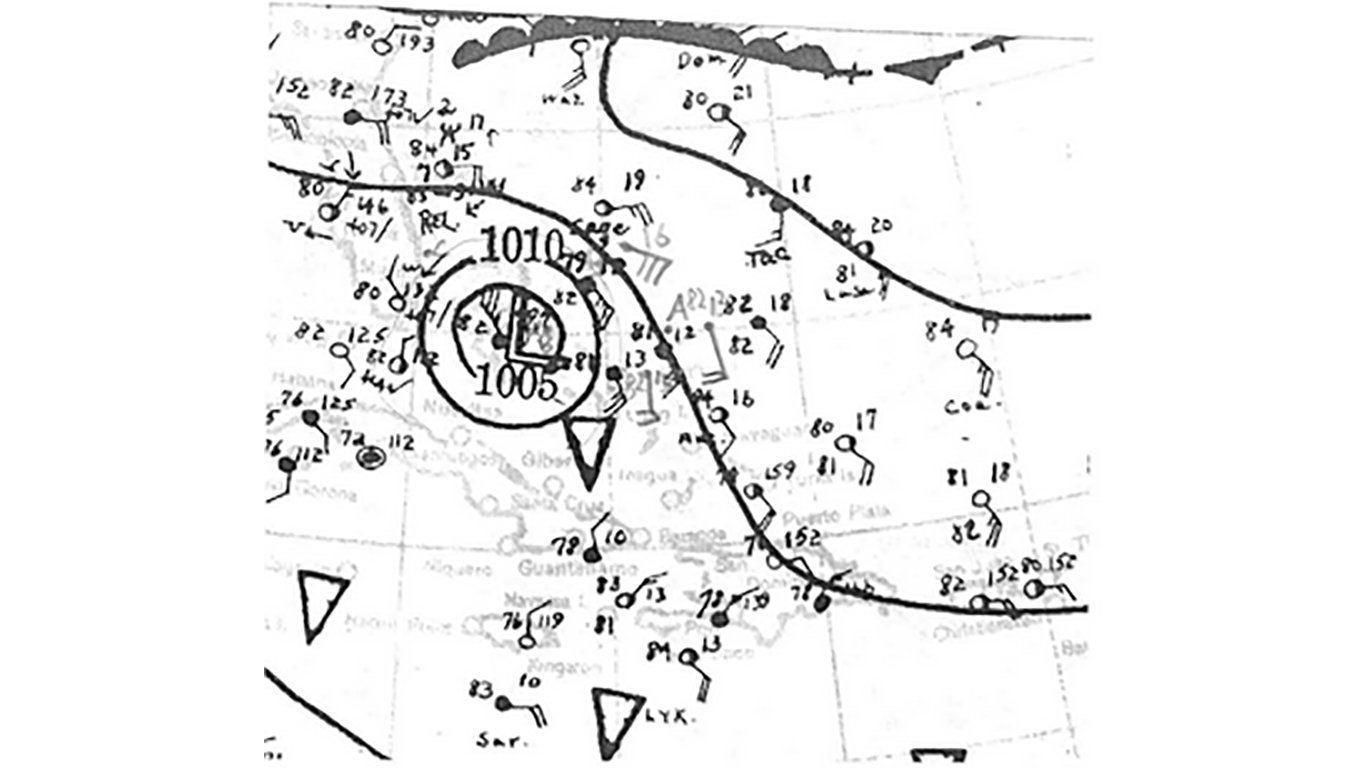
54. 1933 Treasure Coast Hurricane (September, 1933)
> Minimum pressure millibars: 948
> Max. wind speed at landfall: 110 mph
> Max. wind speed measured: 120 mph
> Affected area: Caribbean, Florida, Georgia, Carolinas
[in-text-ad-2]
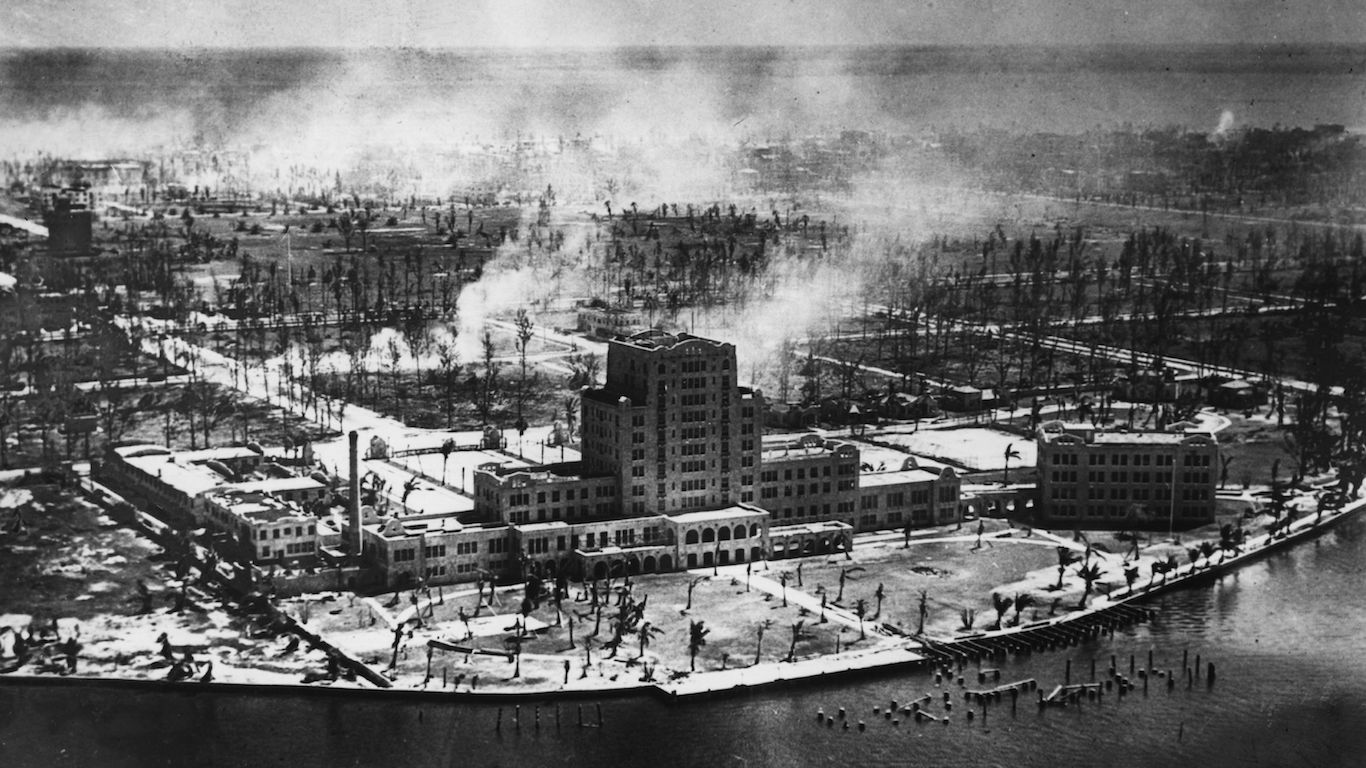
53. 1929 Bahamas Hurricane (September, 1929)
> Minimum pressure millibars: 948
> Max. wind speed at landfall: 100 mph
> Max. wind speed measured: 135 mph
> Affected area: Bahamas, Georgia, Florida
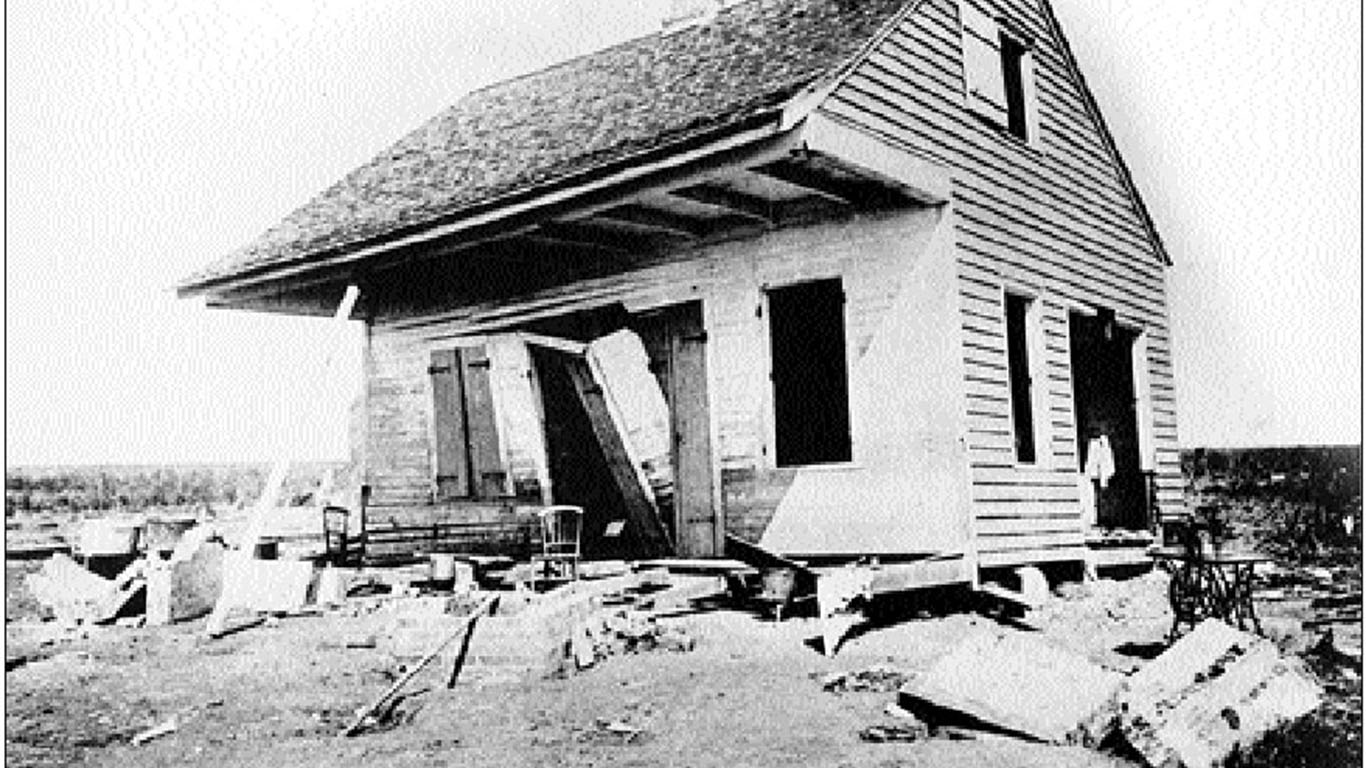
52. 1893 Cheniere Caminada Hurricane (October, 1893)
> Minimum pressure millibars: 948
> Max. wind speed at landfall: 115 mph
> Max. wind speed measured: 115 mph
> Affected area: Louisiana, Mississippi, eastern Mexico
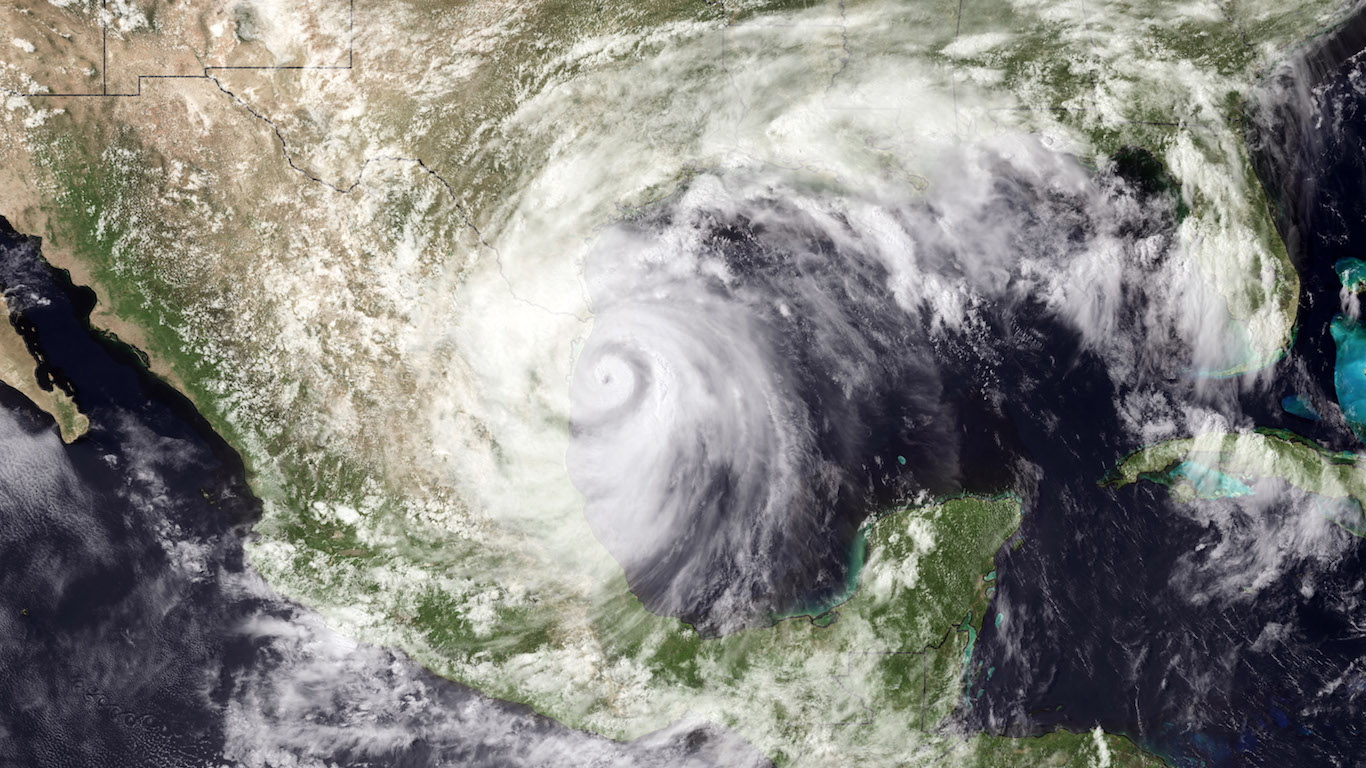
51. Hurricane Alex (July, 2010)
> Minimum pressure millibars: 946
> Max. wind speed at landfall: 95 mph
> Max. wind speed measured: 95 mph
> Affected area: Central America, Mexico
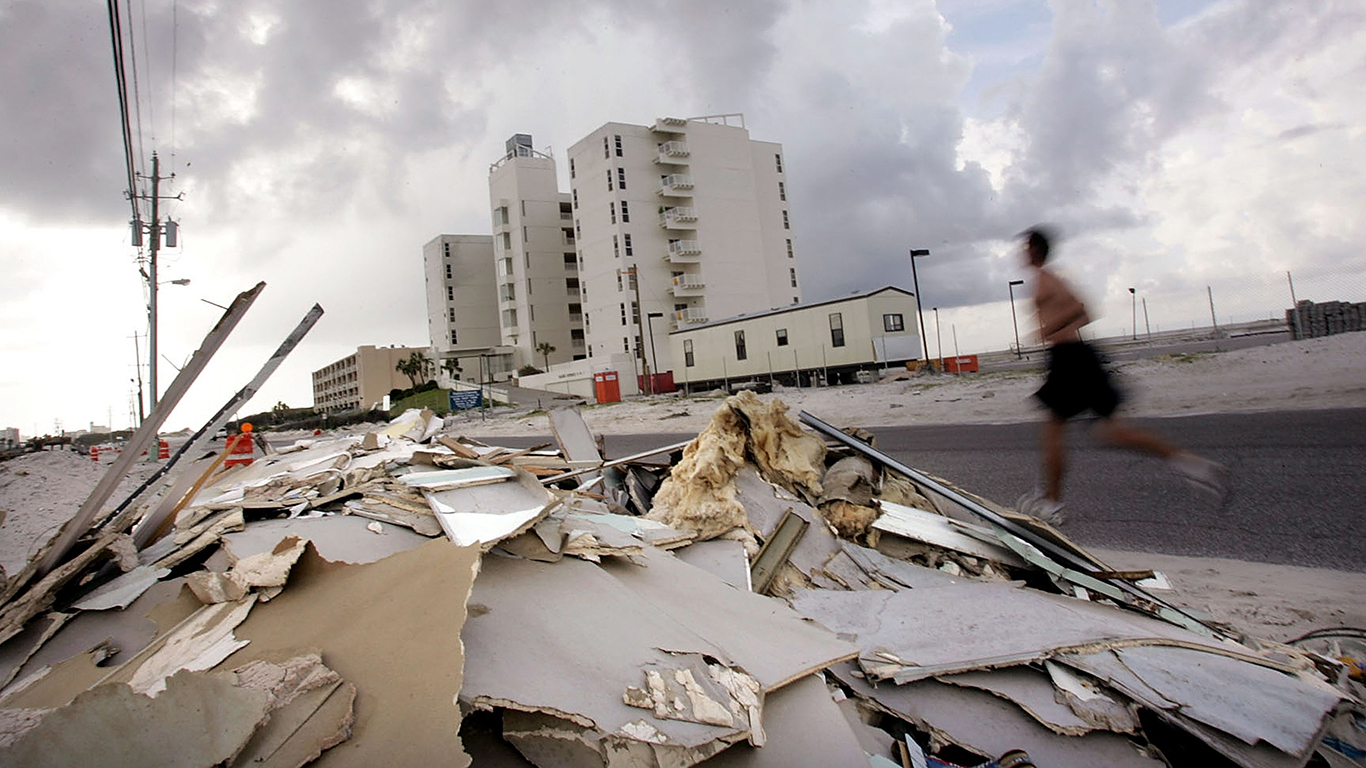
50. Hurricane Ivan (September, 2004)
> Minimum pressure millibars: 946
> Max. wind speed at landfall: 105 mph
> Max. wind speed measured: 145 mph
> Affected area: Caribbean islands, Alabama, Louisiana
[in-text-ad]

49. Hurricane Audrey (June, 1957)
> Minimum pressure millibars: 946
> Max. wind speed at landfall: 110 mph
> Max. wind speed measured: 110 mph
> Affected area: Gulf Coast states
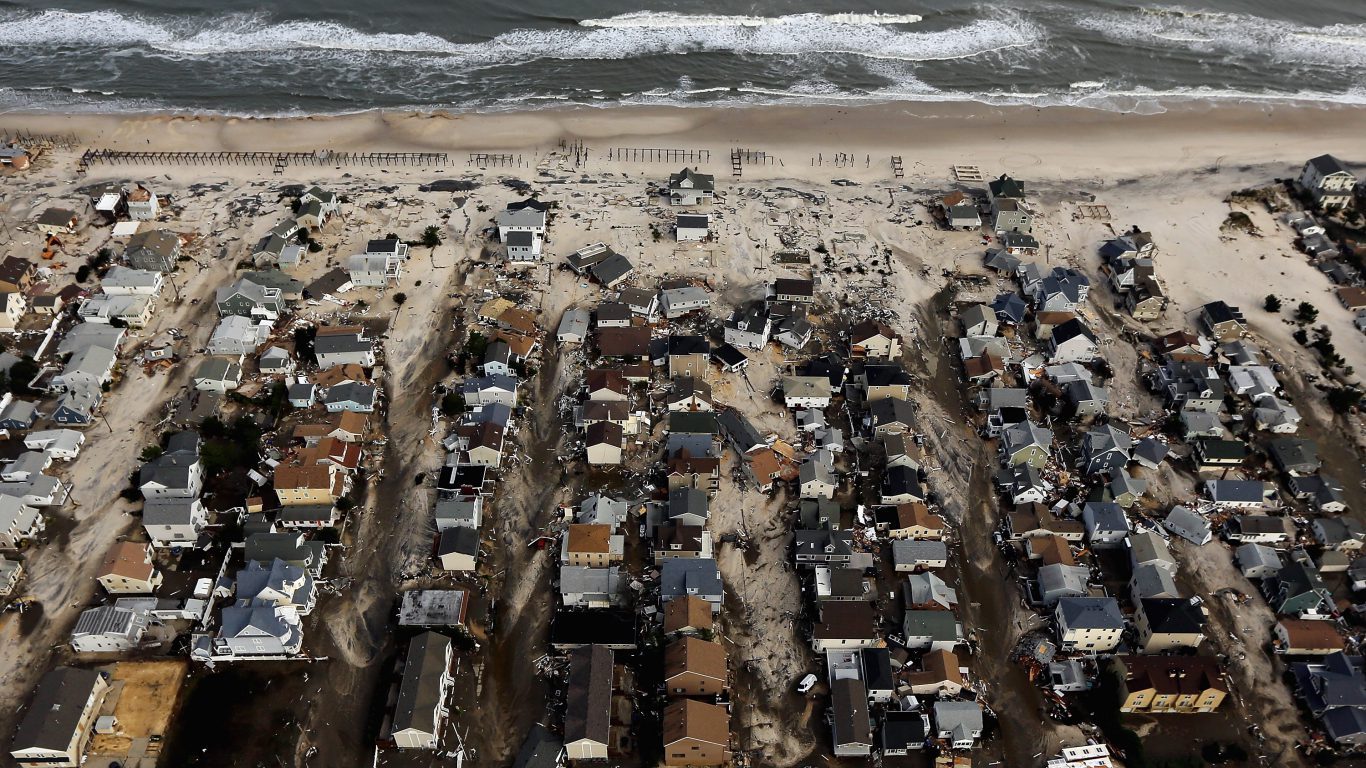
48. Hurricane Sandy (October, 2012)
> Minimum pressure millibars: 945
> Max. wind speed at landfall: 70 mph
> Max. wind speed measured: 100 mph
> Affected area: Caribbean islands, U.S. East Coast

47. Hurricane Ike (September, 2008)
> Minimum pressure millibars: 945
> Max. wind speed at landfall: 115 mph
> Max. wind speed measured: 125 mph
> Affected area: Caribbean islands, Louisiana, southeastern Texas

46. Hurricane Luis (September, 1995)
> Minimum pressure millibars: 945
> Max. wind speed at landfall: 115 mph
> Max. wind speed measured: 120 mph
> Affected area: Leeward Islands, Bermuda
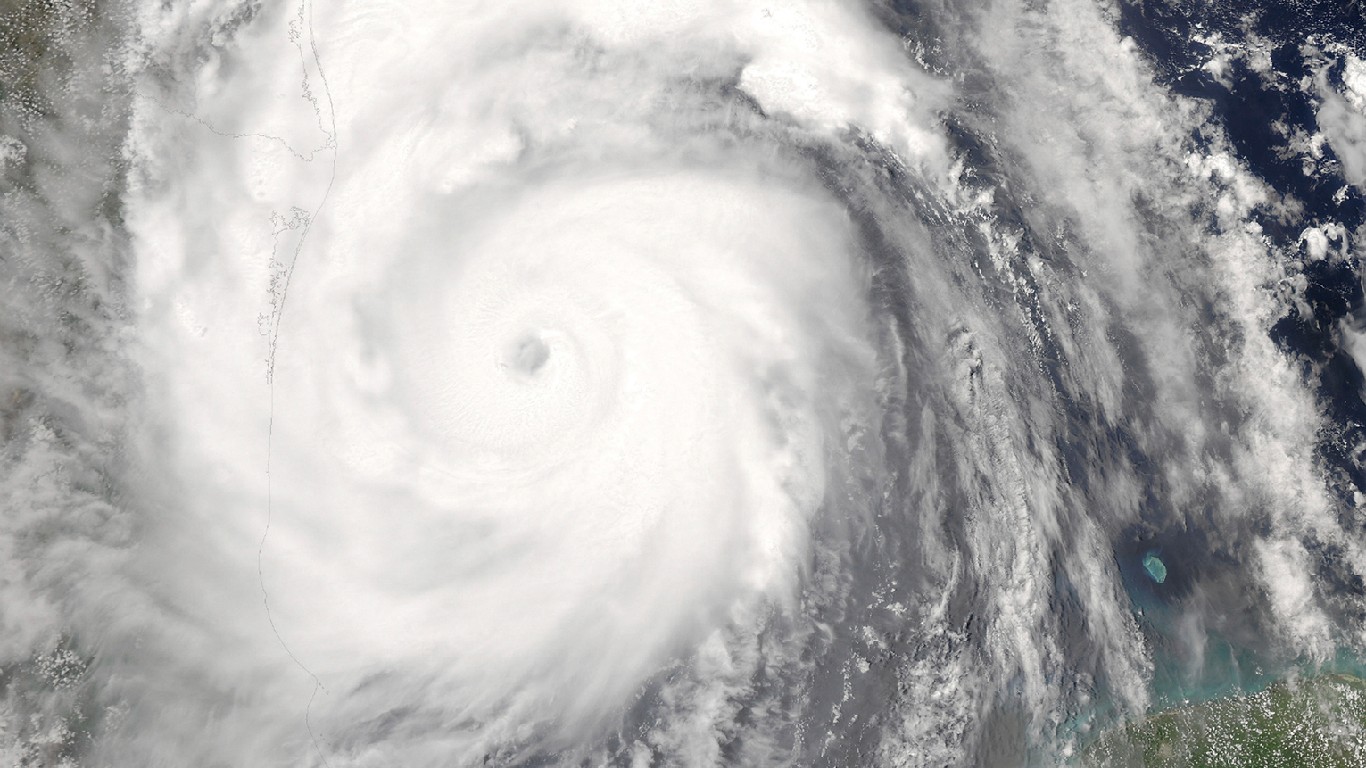
45. Hurricane Emily (July, 2005)
> Minimum pressure millibars: 944
> Max. wind speed at landfall: 110 mph
> Max. wind speed measured: 140 mph
> Affected area: Grenada, eastern Mexico
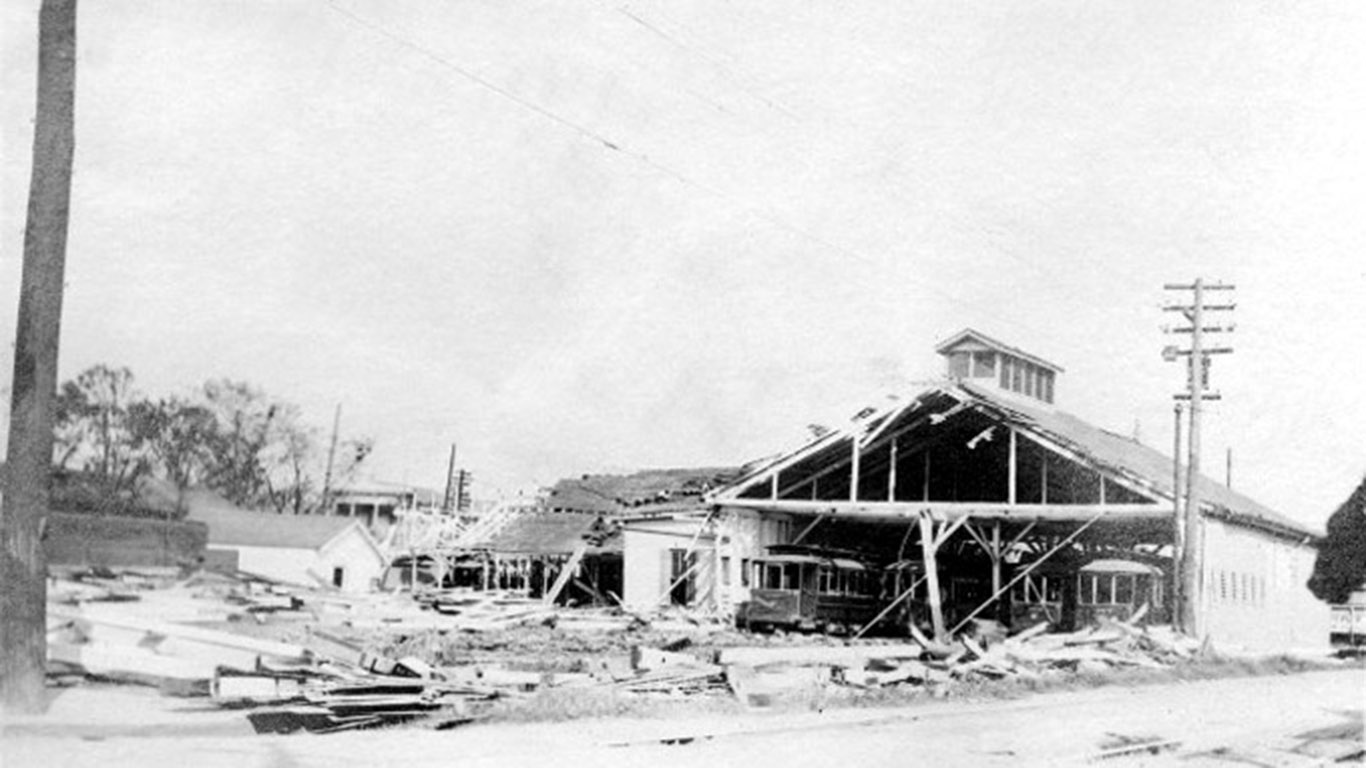
44. 1915 New Orleans Hurricane (September, 1915)
> Minimum pressure millibars: 944
> Max. wind speed at landfall: 110 mph
> Max. wind speed measured: 125 mph
> Affected area: Caribbean islands, eastern Mexico, Central and South America, southern U.S.
[in-text-ad-2]
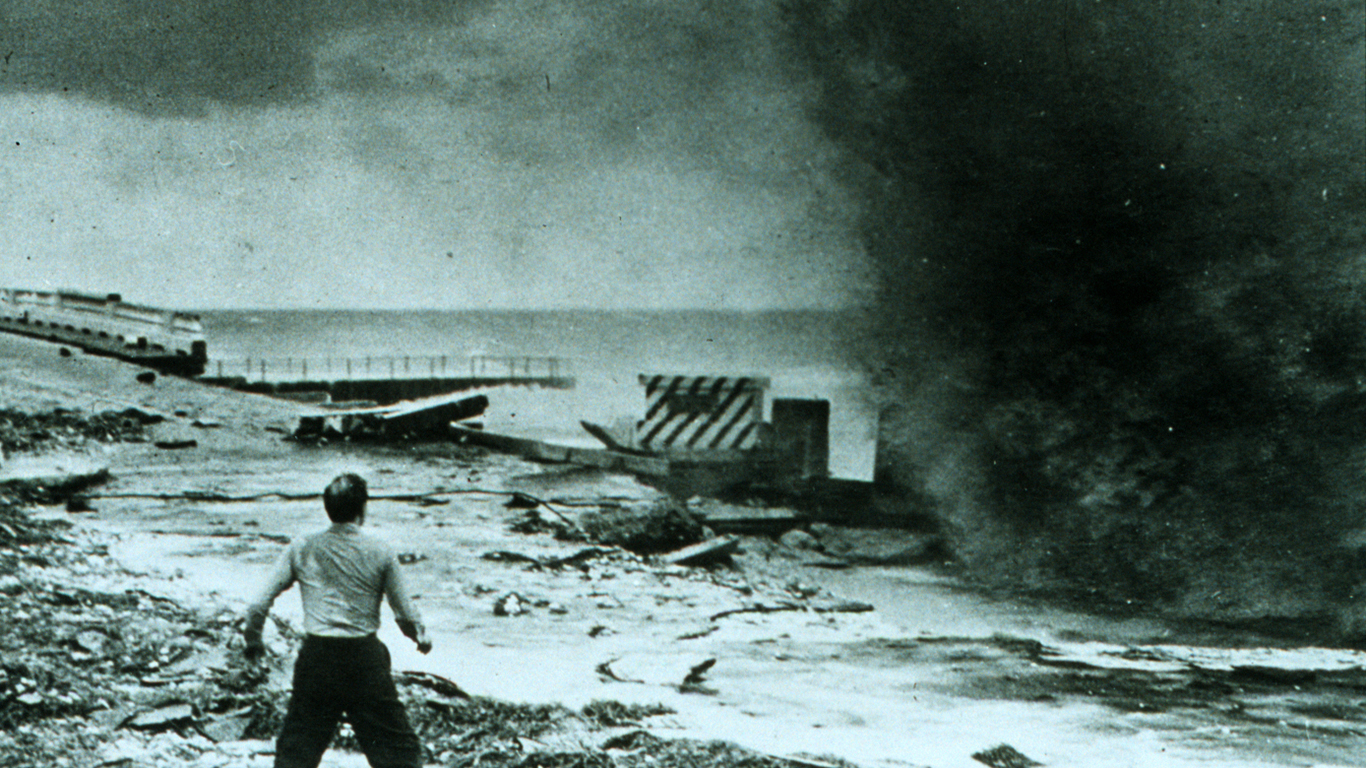
43. 1947 Fort Lauderdale Hurricane (September, 1947)
> Minimum pressure millibars: 943
> Max. wind speed at landfall: 115 mph
> Max. wind speed measured: 125 mph
> Affected area: Bahamas, southern U.S. states
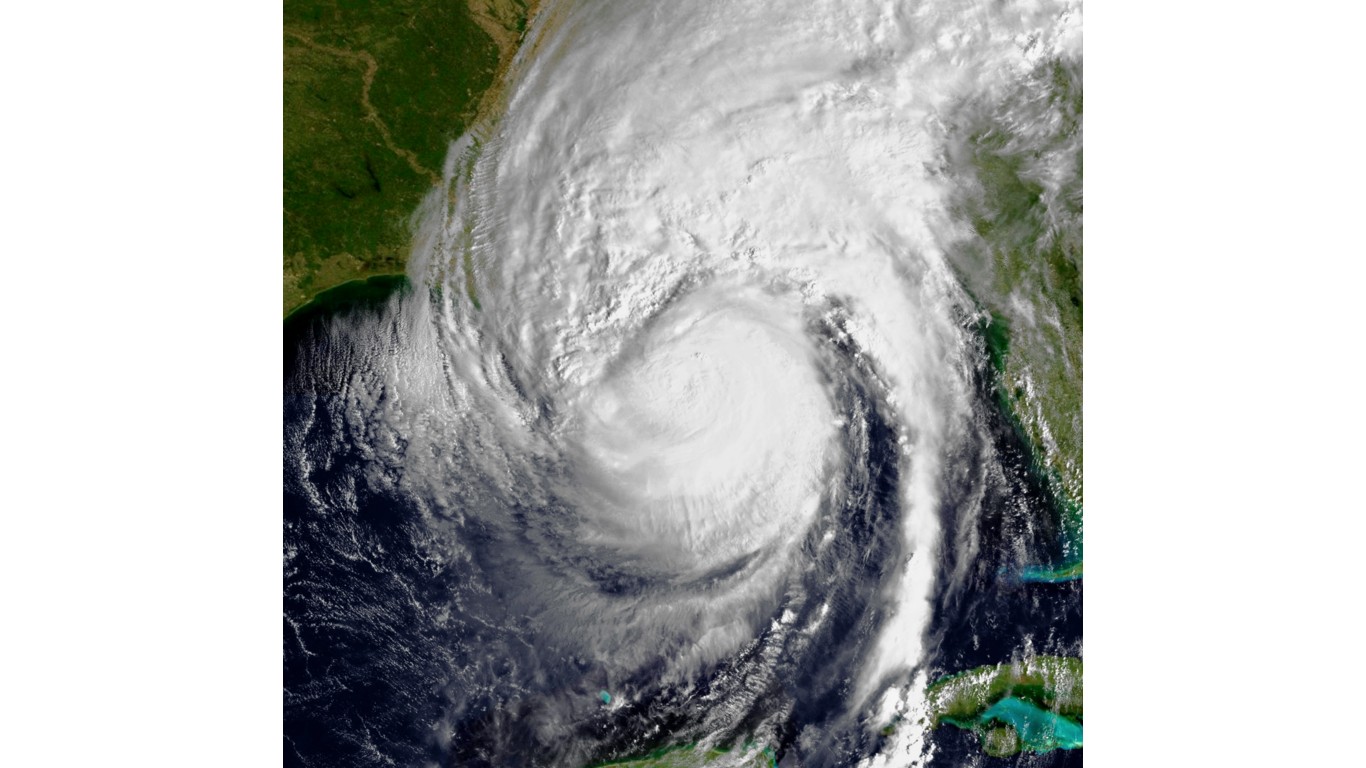
42. Hurricane Opal (October, 1995)
> Minimum pressure millibars: 942
> Max. wind speed at landfall: 100 mph
> Max. wind speed measured: 130 mph
> Affected area: Eastern Mexico, Alabama, Florida
41. Hurricane Gloria (September, 1985)
> Minimum pressure millibars: 942
> Max. wind speed at landfall: 90 mph
> Max. wind speed measured: 125 mph
> Affected area: Bahamas, U.S. East Coast, New England
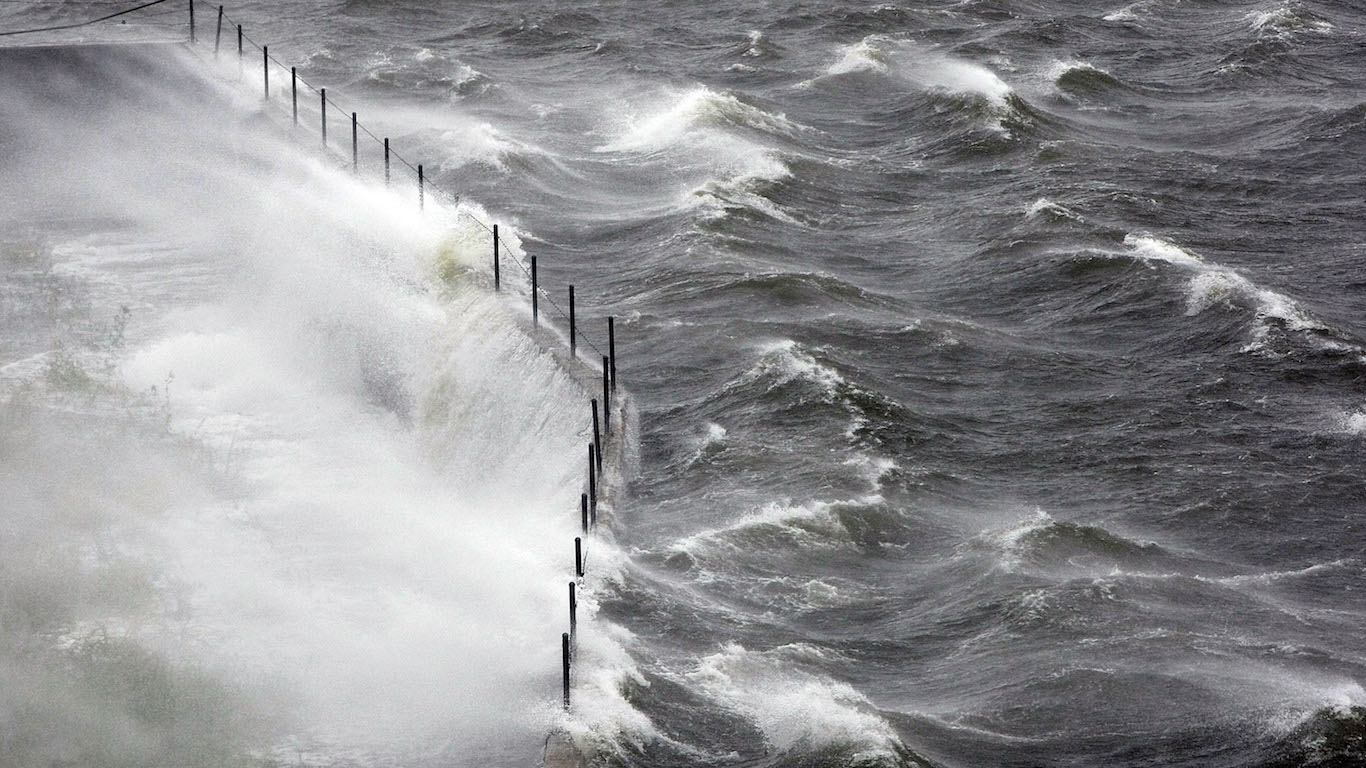
40. Hurricane Gustav (August, 2008)
> Minimum pressure millibars: 941
> Max. wind speed at landfall: 135 mph
> Max. wind speed measured: 135 mph
> Affected area: Haiti, Cuba, and Louisiana
[in-text-ad]

39. Hurricane Dennis (July, 2005)
> Minimum pressure millibars: 941
> Max. wind speed at landfall: 120 mph
> Max. wind speed measured: 130 mph
> Affected area: Windward Islands, Jamaica, Cuba, western Florida
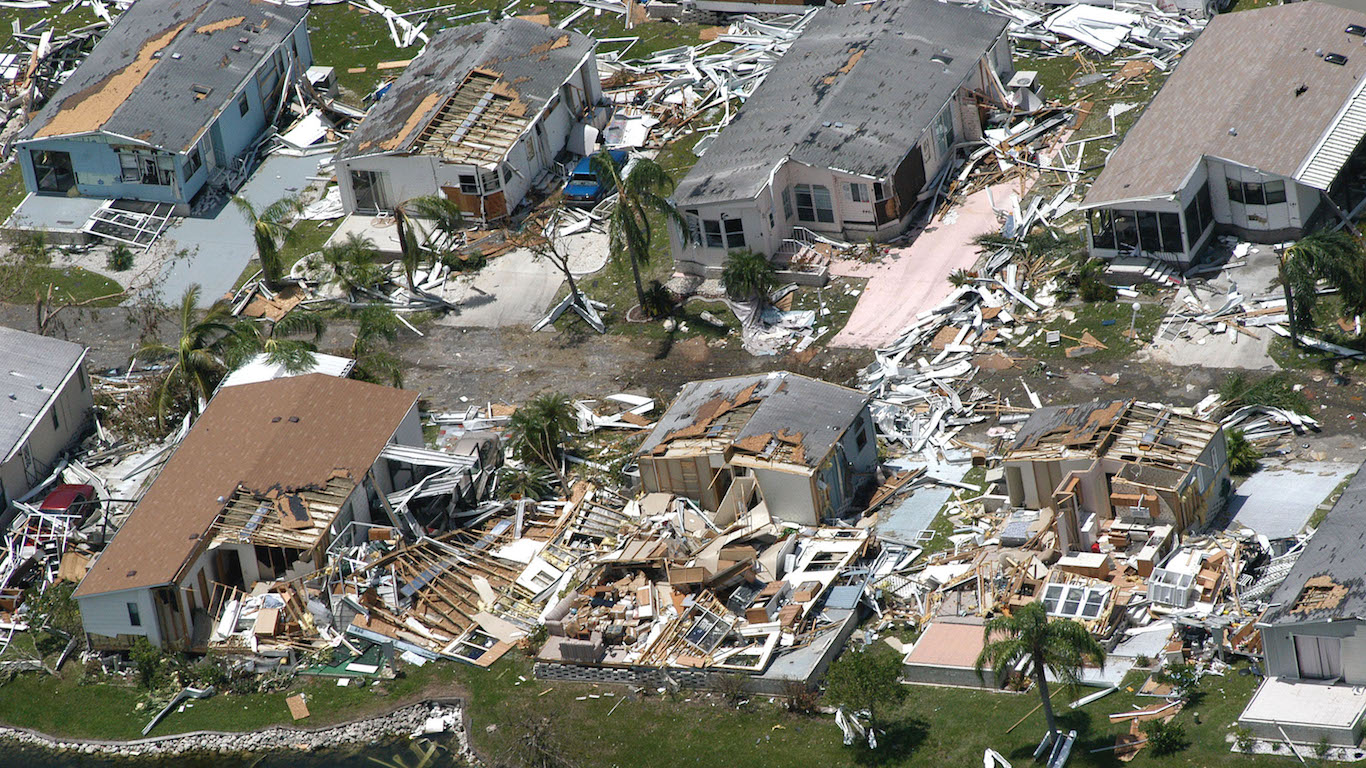
38. Hurricane Charley (August, 2004)
> Minimum pressure millibars: 941
> Max. wind speed at landfall: 130 mph
> Max. wind speed measured: 130 mph
> Affected area: Jamaica, Grand Cayman Island, Cuba, Florida, Carolinas, Virginia
37. Great New England Hurricane (September, 1938)
> Minimum pressure millibars: 941
> Max. wind speed at landfall: 105 mph
> Max. wind speed measured: 140 mph
> Affected area: Long Island, New England

36. Hurricane Joaquin (October, 2015)
> Minimum pressure millibars: 940
> Max. wind speed at landfall: 110 mph
> Max. wind speed measured: 135 mph
> Affected area: Cuba, Bermuda, Turks and Caicos Islands
35. 1948 Miami Hurricane (September, 1948)
> Minimum pressure millibars: 940
> Max. wind speed at landfall: 115 mph
> Max. wind speed measured: 115 mph
> Affected area: Cuba, Florida, Bahamas, Bermuda
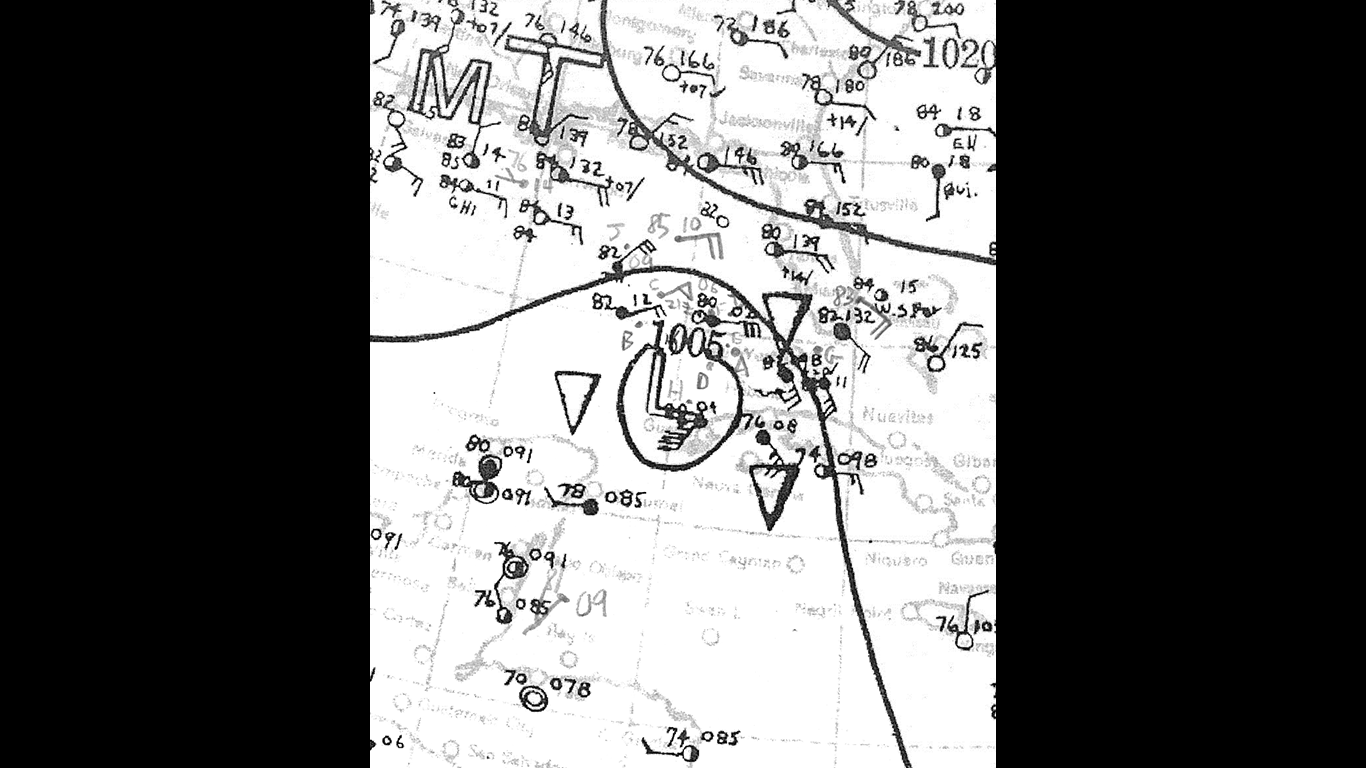
34. 1933 Cuba-Brownsville Hurricane (September, 1933)
> Minimum pressure millibars: 940
> Max. wind speed at landfall: 110 mph
> Max. wind speed measured: 140 mph
> Affected area: Bahamas, Cuba, southeastern Texas
[in-text-ad-2]
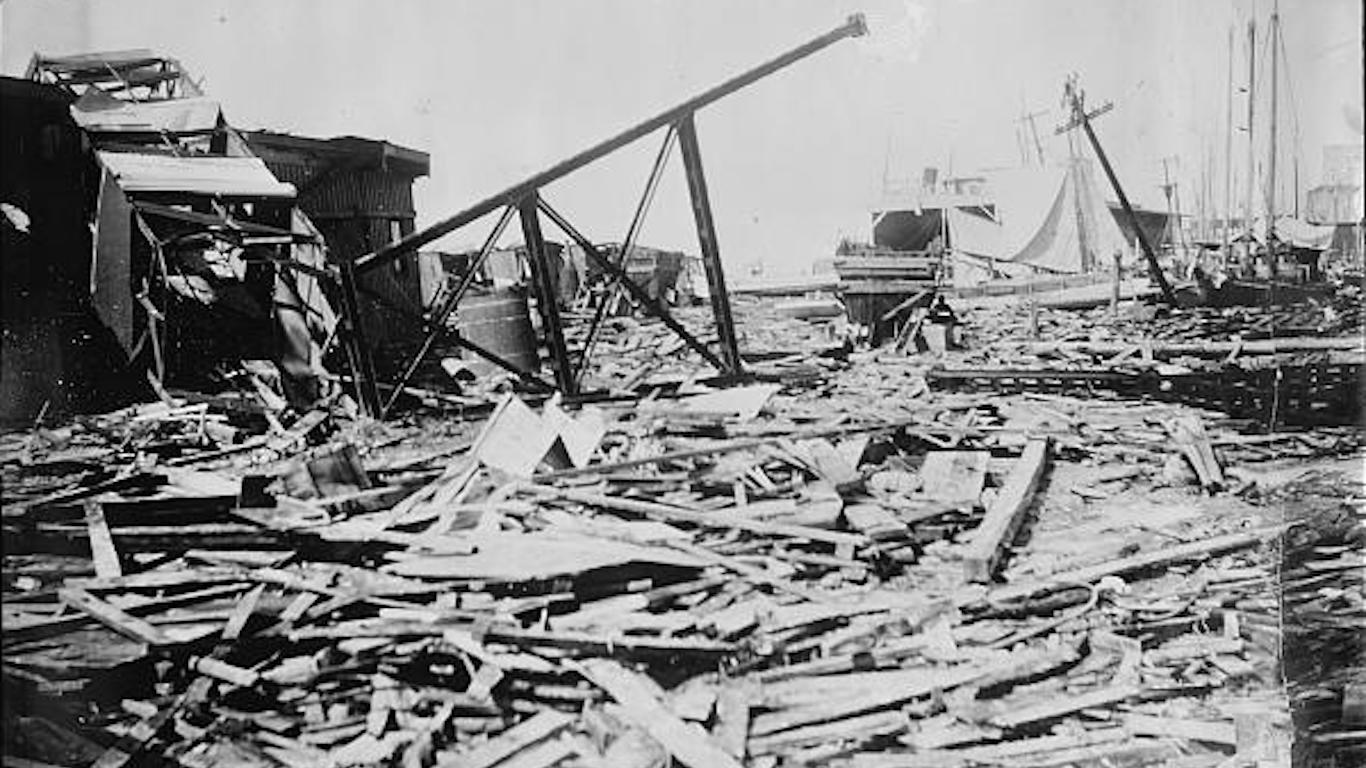
33. 1915 Galveston Hurricane (August, 1915)
> Minimum pressure millibars: 940
> Max. wind speed at landfall: 115 mph
> Max. wind speed measured: 125 mph
> Affected area: Greater Antilles, southeastern Texas
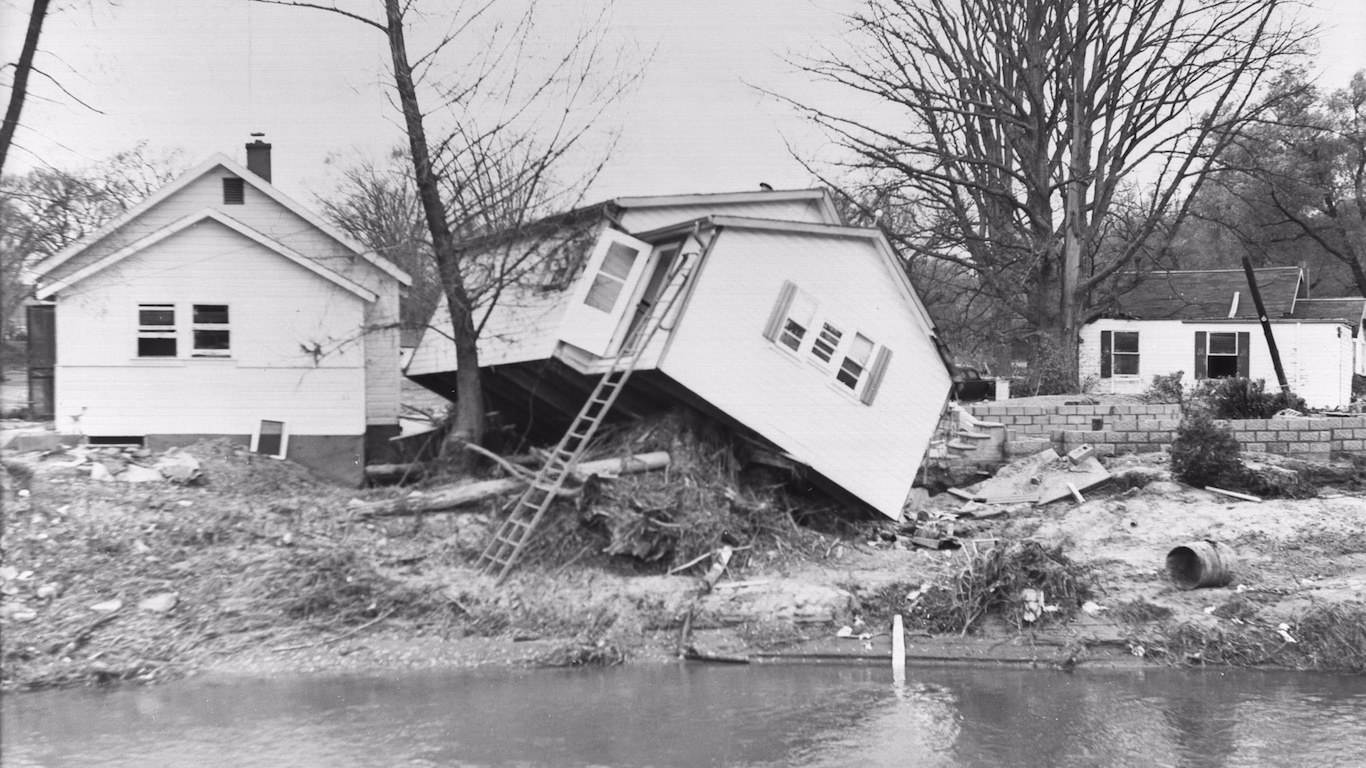
32. Hurricane Hazel (October, 1954)
> Minimum pressure millibars: 938
> Max. wind speed at landfall: 115 mph
> Max. wind speed measured: 115 mph
> Affected area: Windward Islands, Haiti, Bahamas, U.S. East Coast, Canada,
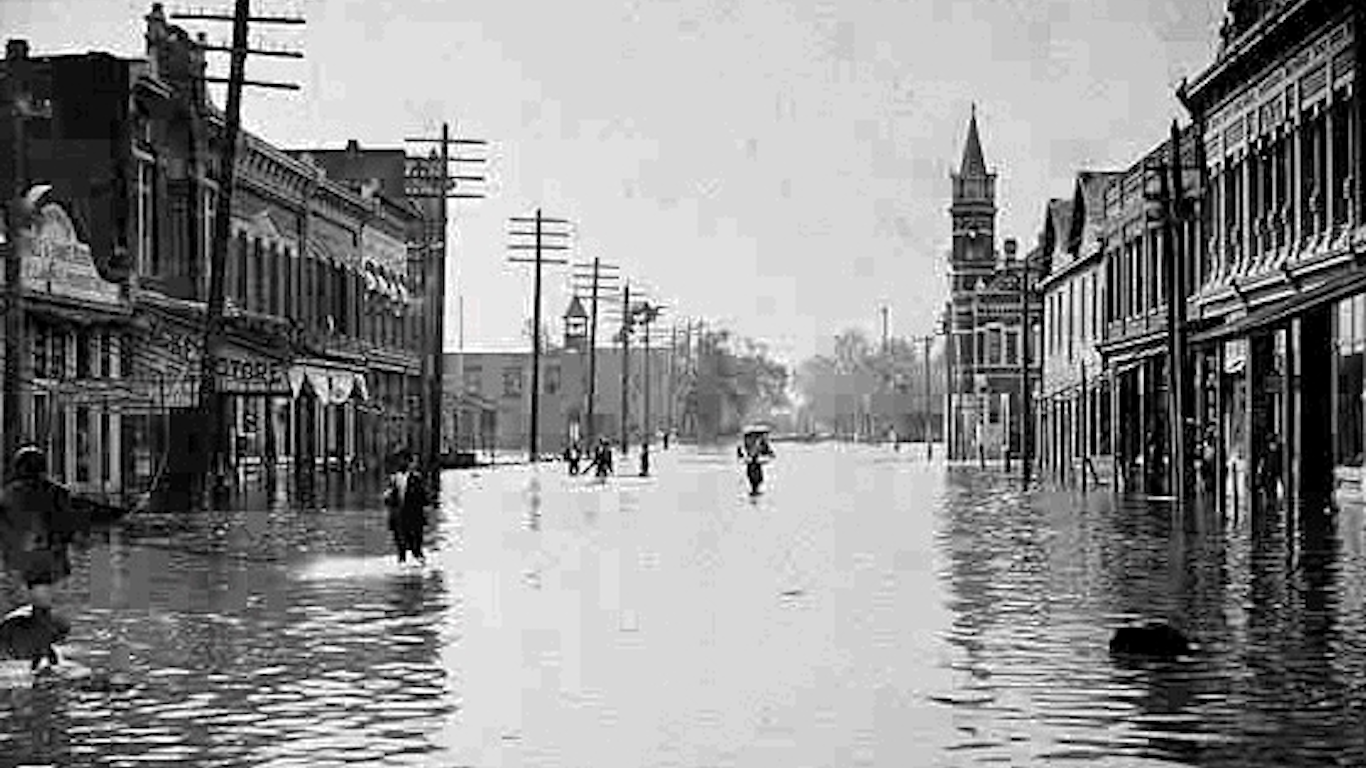
31. Hurricane Unnamed (October, 1898)
> Minimum pressure millibars: 938
> Max. wind speed at landfall: 115 mph
> Max. wind speed measured: 115 mph
> Affected area: Georgia, Florida
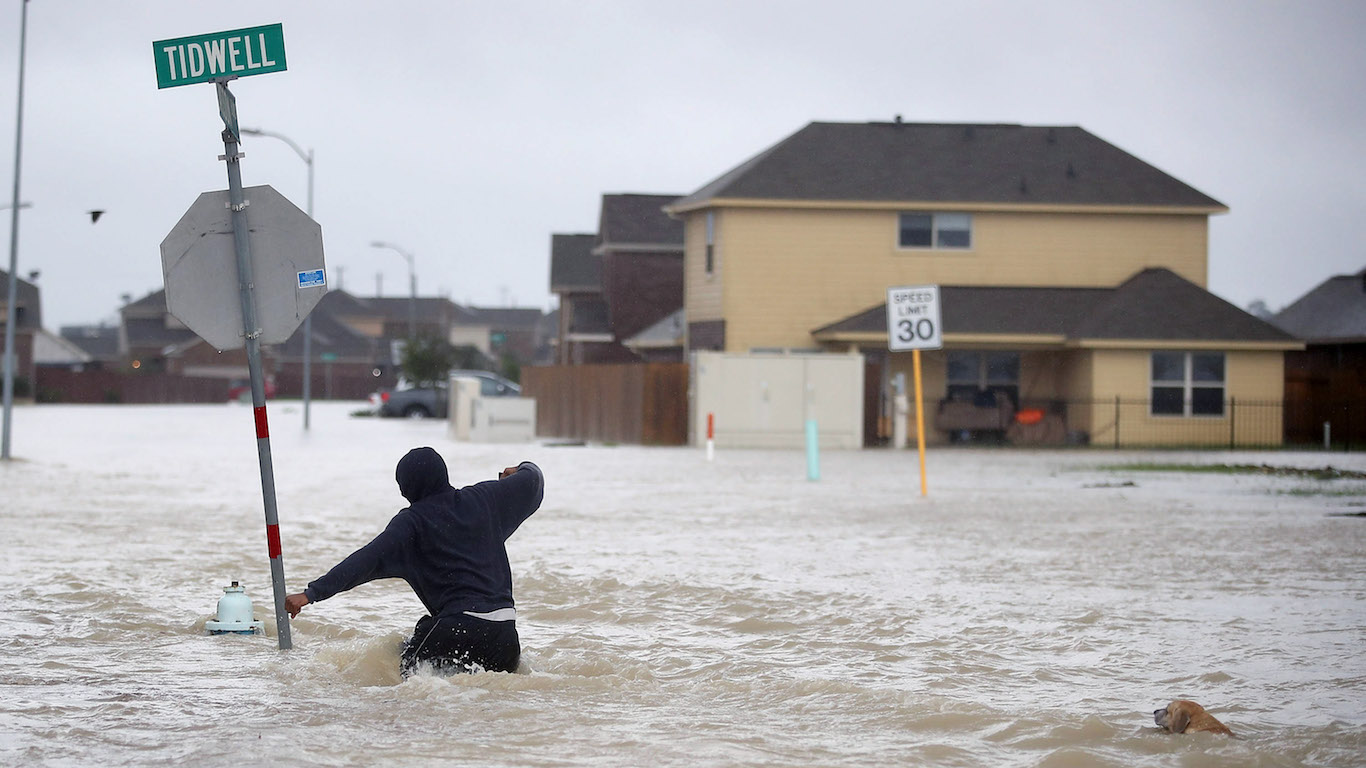
30. Hurricane Harvey (August, 2017)
> Minimum pressure millibars: 937
> Max. wind speed at landfall: 115 mph
> Max. wind speed measured: 115 mph
> Affected area: Southeastern Texas
[in-text-ad]
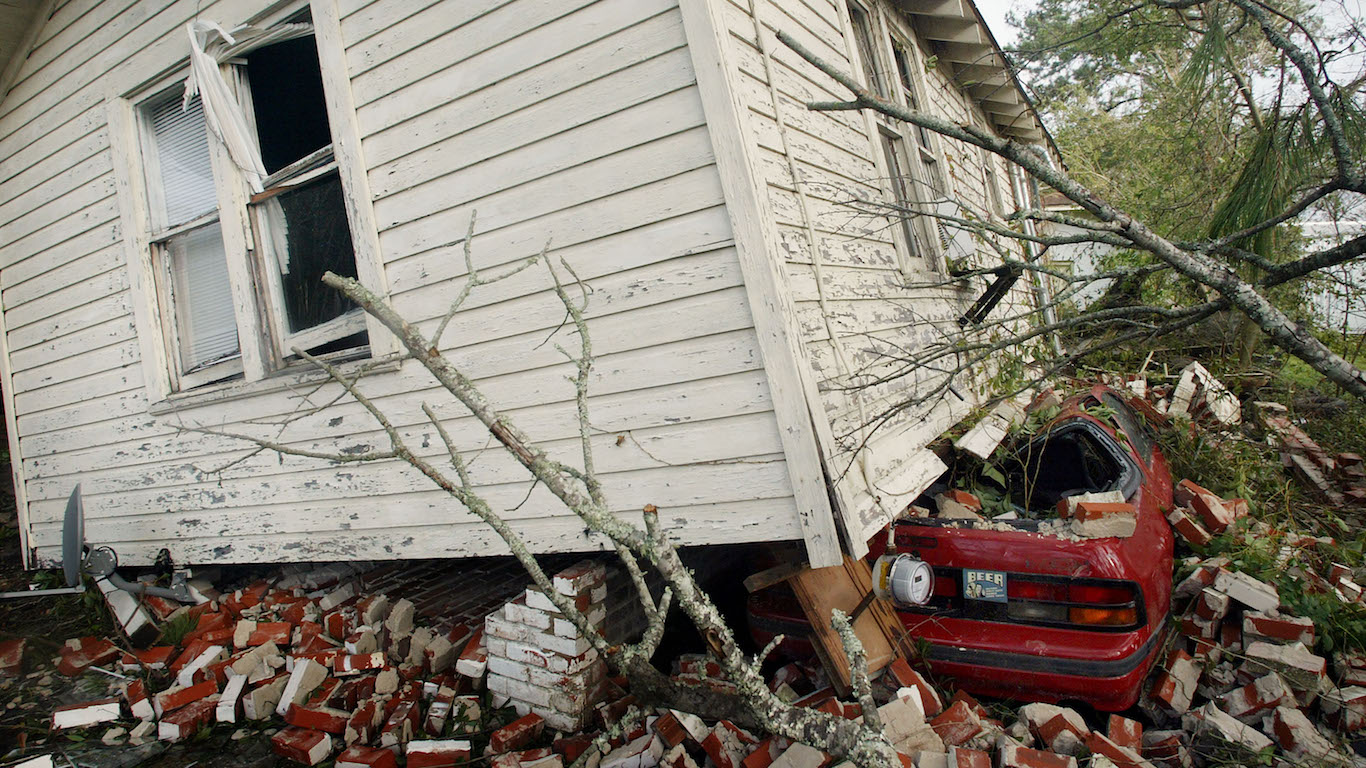
29. Hurricane Rita (September, 2005)
> Minimum pressure millibars: 937
> Max. wind speed at landfall: 100 mph
> Max. wind speed measured: 155 mph
> Affected area: Southeastern Texas, southwestern Louisiana, Florida Keys

28. Hurricane Isidore (September, 2002)
> Minimum pressure millibars: 936
> Max. wind speed at landfall: 110 mph
> Max. wind speed measured: 110 mph
> Affected area: Cuba, eastern Mexico, Louisiana

27. The Galveston Hurricane of 1900 (September, 1900)
> Minimum pressure millibars: 936
> Max. wind speed at landfall: 120 mph
> Max. wind speed measured: 125 mph
> Affected area: Cuba, southeastern Texas
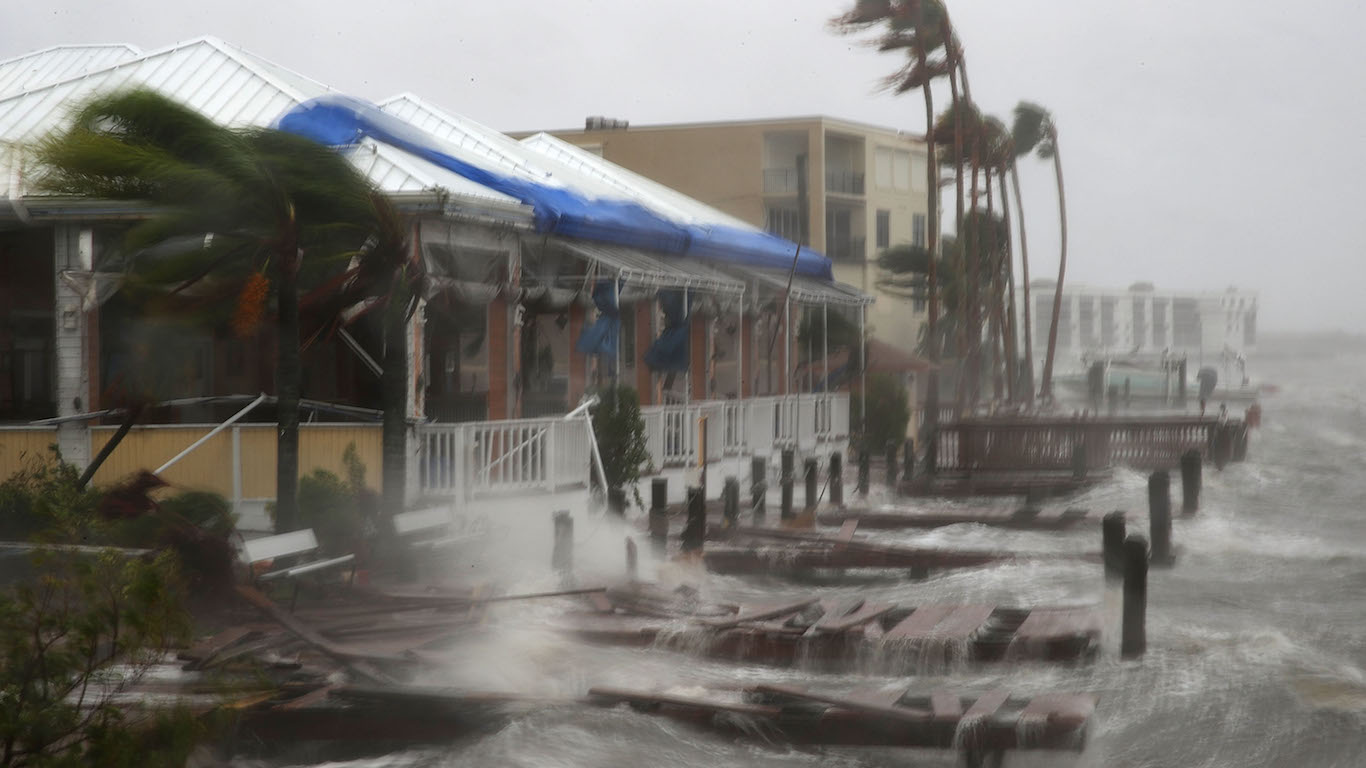
26. Hurricane Matthew (October, 2016)
> Minimum pressure millibars: 935
> Max. wind speed at landfall: 130 mph
> Max. wind speed measured: 145 mph
> Affected area: Haiti, Cuba, Bahamas, South Carolina
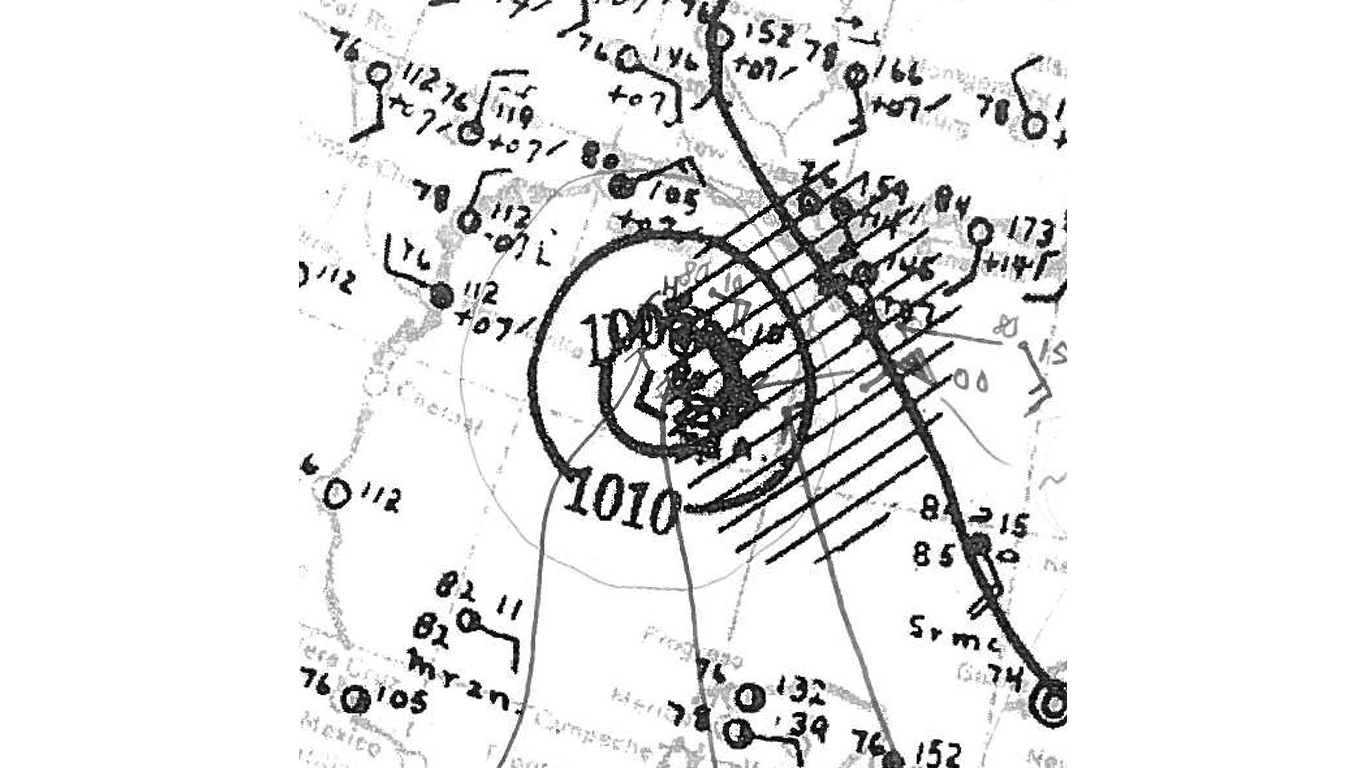
25. 1932 Freeport Hurricane (August, 1932)
> Minimum pressure millibars: 935
> Max. wind speed at landfall: 130 mph
> Max. wind speed measured: 130 mph
> Affected area: Southeastern Texas
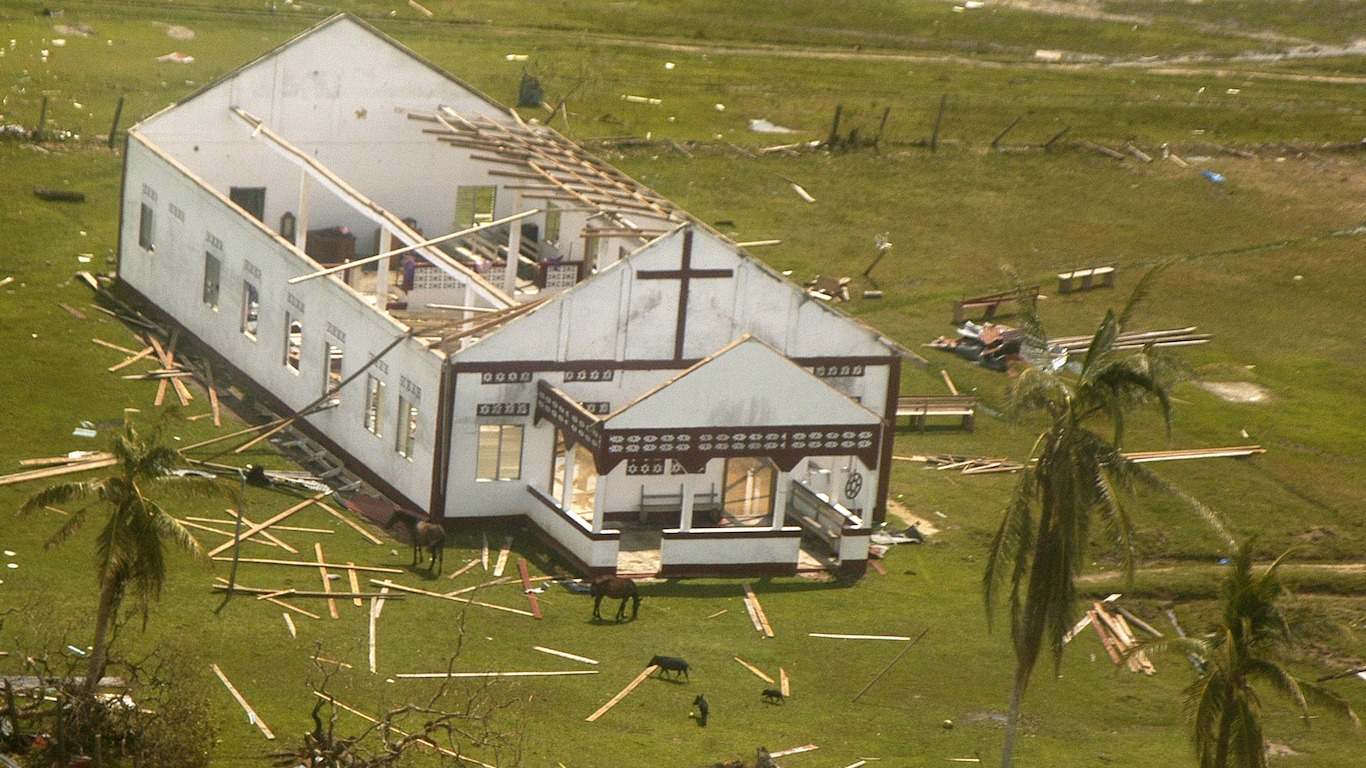
24. Hurricane Felix (September, 2007)
> Minimum pressure millibars: 934
> Max. wind speed at landfall: 140 mph
> Max. wind speed measured: 150 mph
> Affected area: Nicaragua
[in-text-ad-2]
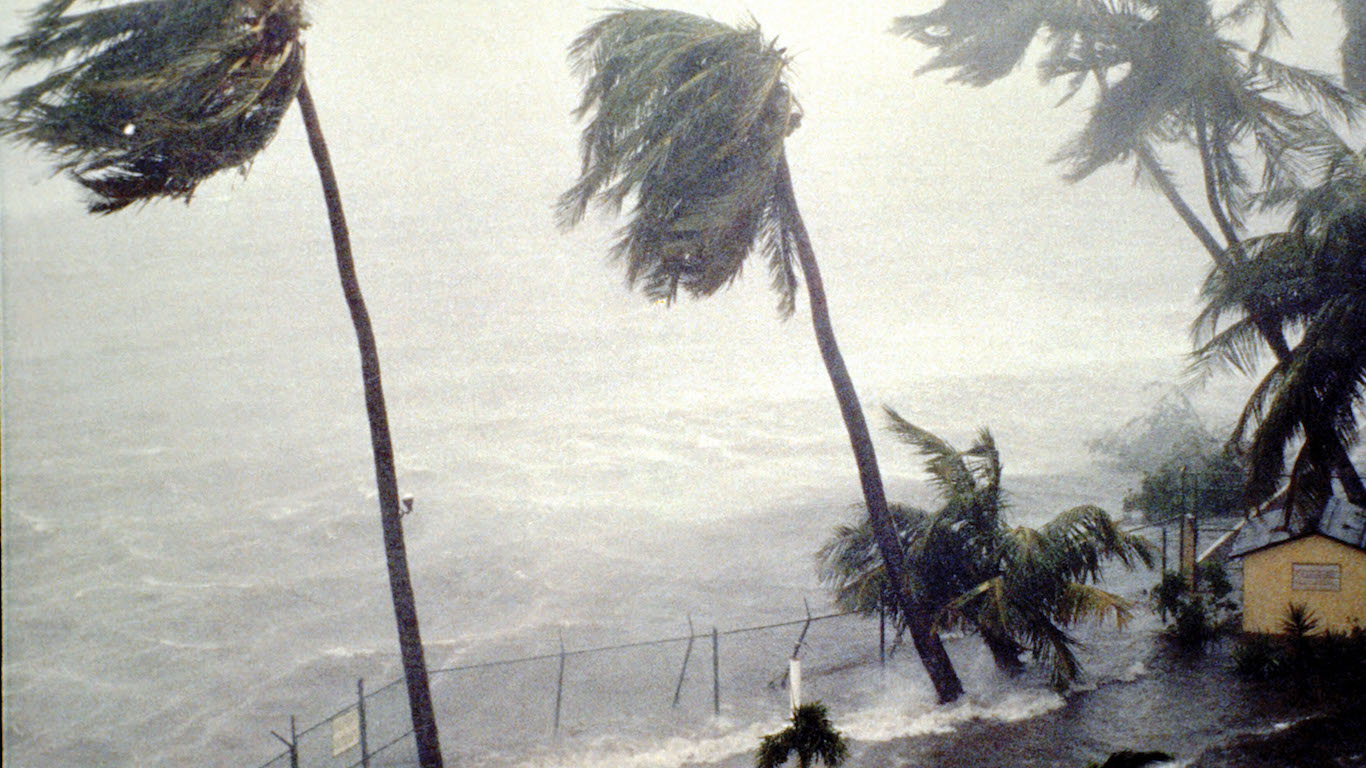
23. Hurricane Hugo (September, 1989)
> Minimum pressure millibars: 934
> Max. wind speed at landfall: 120 mph
> Max. wind speed measured: 140 mph
> Affected area: Leeward Islands, U.S. Virgin Islands, Puerto Rico, Carolinas

22. Hurricane Fox (October, 1952)
> Minimum pressure millibars: 934
> Max. wind speed at landfall: 125 mph
> Max. wind speed measured: 125 mph
> Affected area: Cuba, Florida, Bahamas
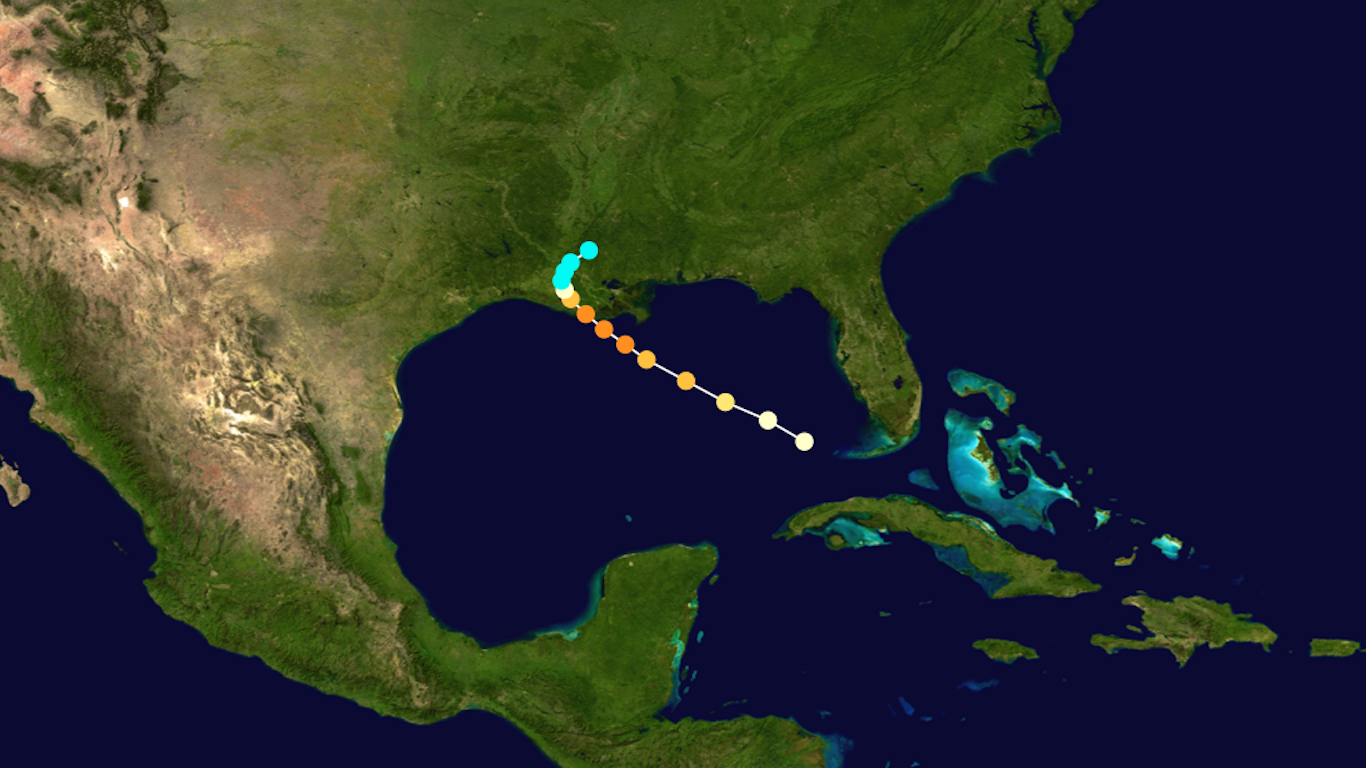
21. 1856 Last Island Hurricane (August, 1856)
> Minimum pressure millibars: 934
> Max. wind speed at landfall: 130 mph
> Max. wind speed measured: 130 mph
> Affected area: Coastal Louisiana

20. Hurricane Lenny (November, 1999)
> Minimum pressure millibars: 933
> Max. wind speed at landfall: 135 mph
> Max. wind speed measured: 135 mph
> Affected area: Eastern Caribbean islands, Leeward and Windward islands
[in-text-ad]

19. Hurricane Joan (October, 1988)
> Minimum pressure millibars: 932
> Max. wind speed at landfall: 125 mph
> Max. wind speed measured: 125 mph
> Affected area: North coast of South America, Central America, Curacao, Guajira Peninsula of Colombia
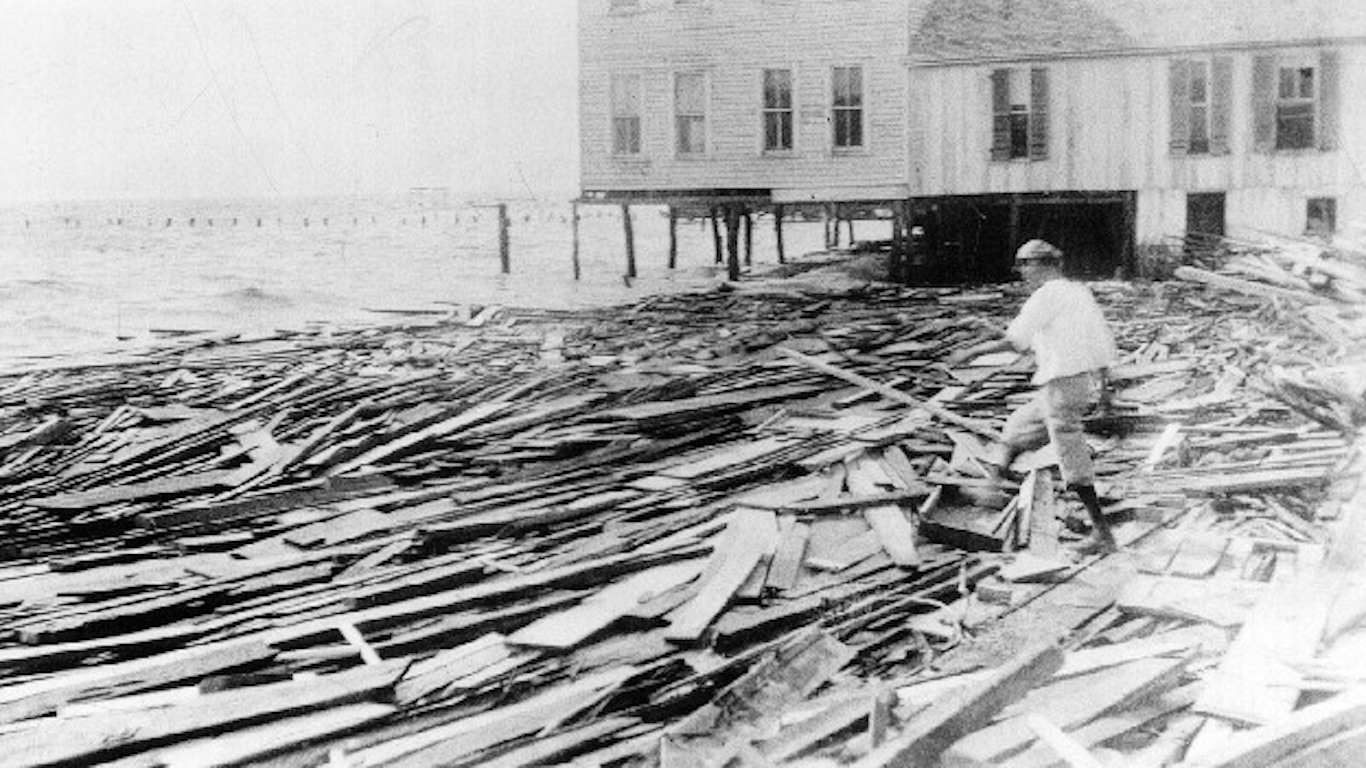
18. 1916 Texas Hurricane (August, 1916)
> Minimum pressure millibars: 932
> Max. wind speed at landfall: 115 mph
> Max. wind speed measured: 115 mph
> Affected area: Caribbean islands, southeastern Texas
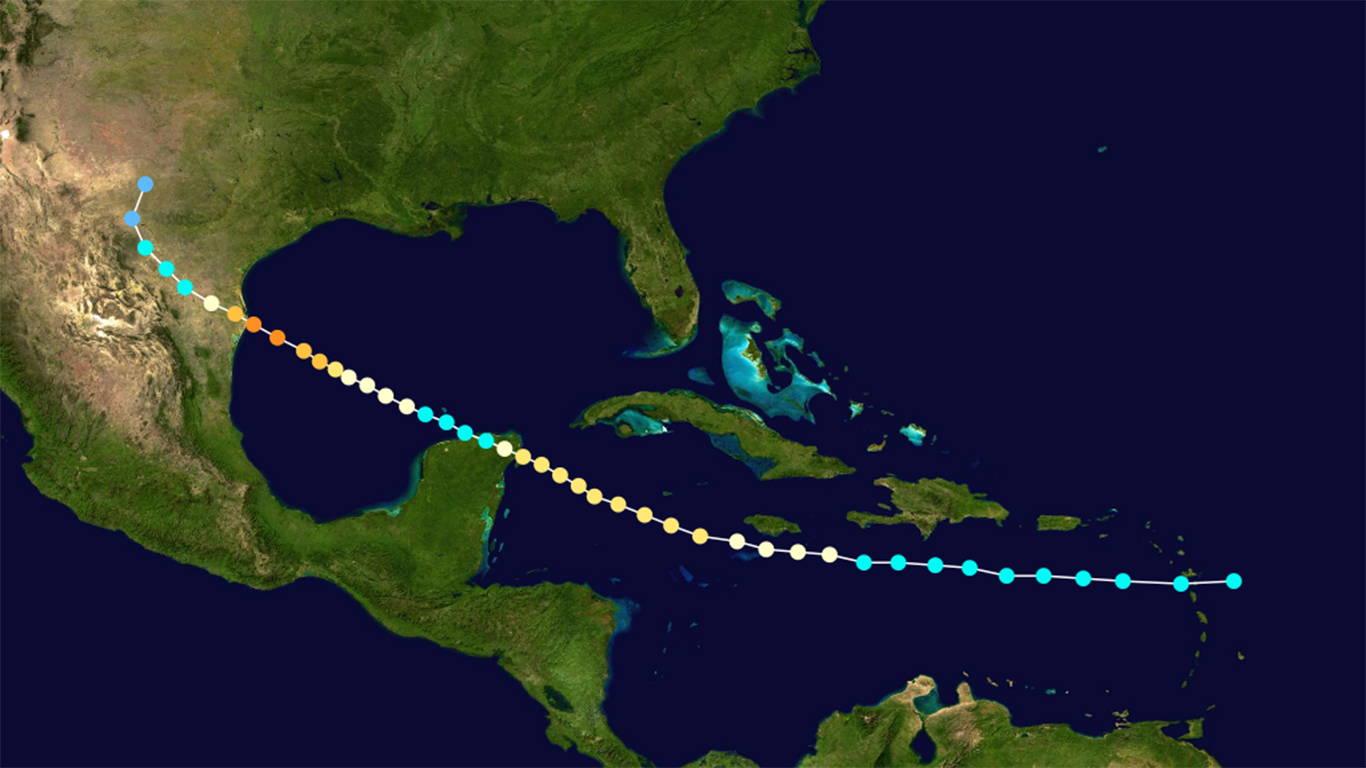
17. 2nd Hurricane of 1880 Season (August, 1880)
> Minimum pressure millibars: 931
> Max. wind speed at landfall: 130 mph
> Max. wind speed measured: 130 mph
> Affected area: Southeastern Texas
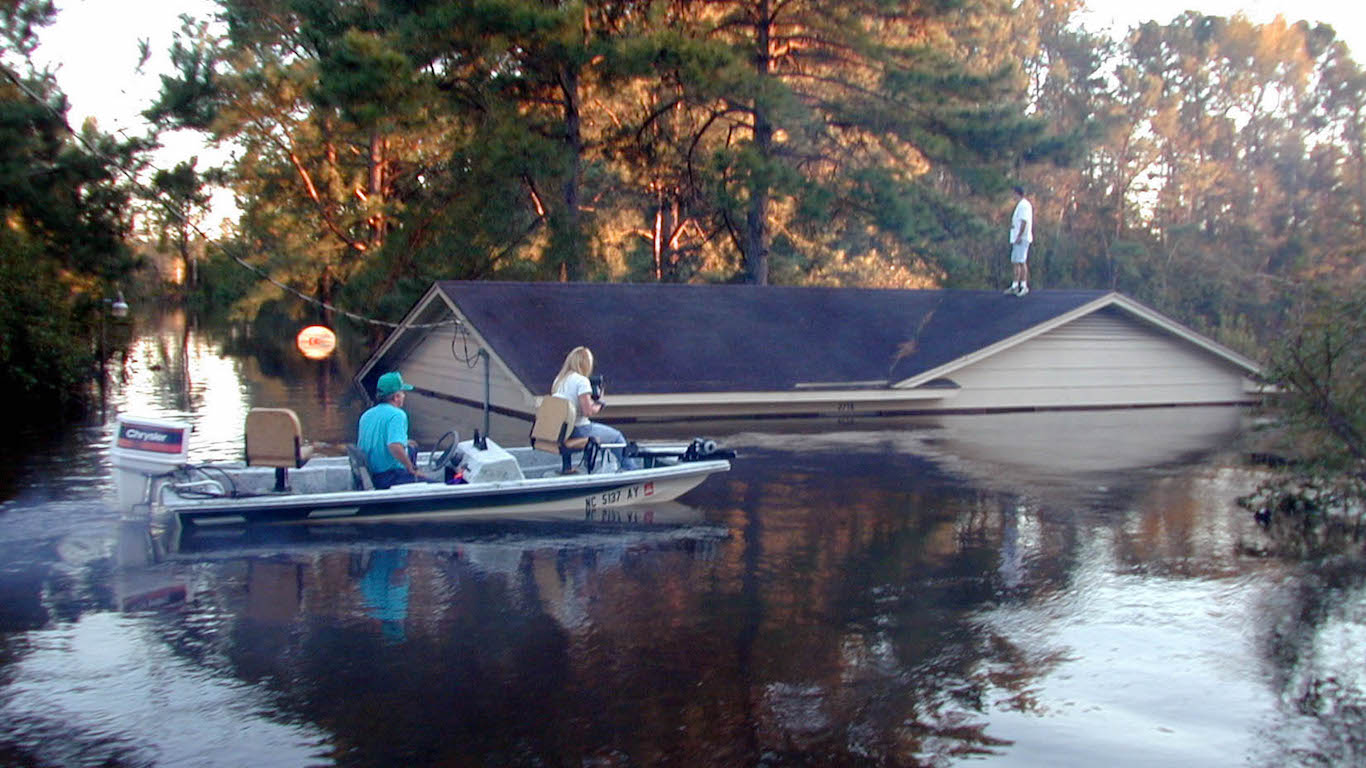
16. Hurricane Floyd (September, 1999)
> Minimum pressure millibars: 930
> Max. wind speed at landfall: 105 mph
> Max. wind speed measured: 135 mph
> Affected area: Bahamas, North Carolina, mid-Atlantic states, New England
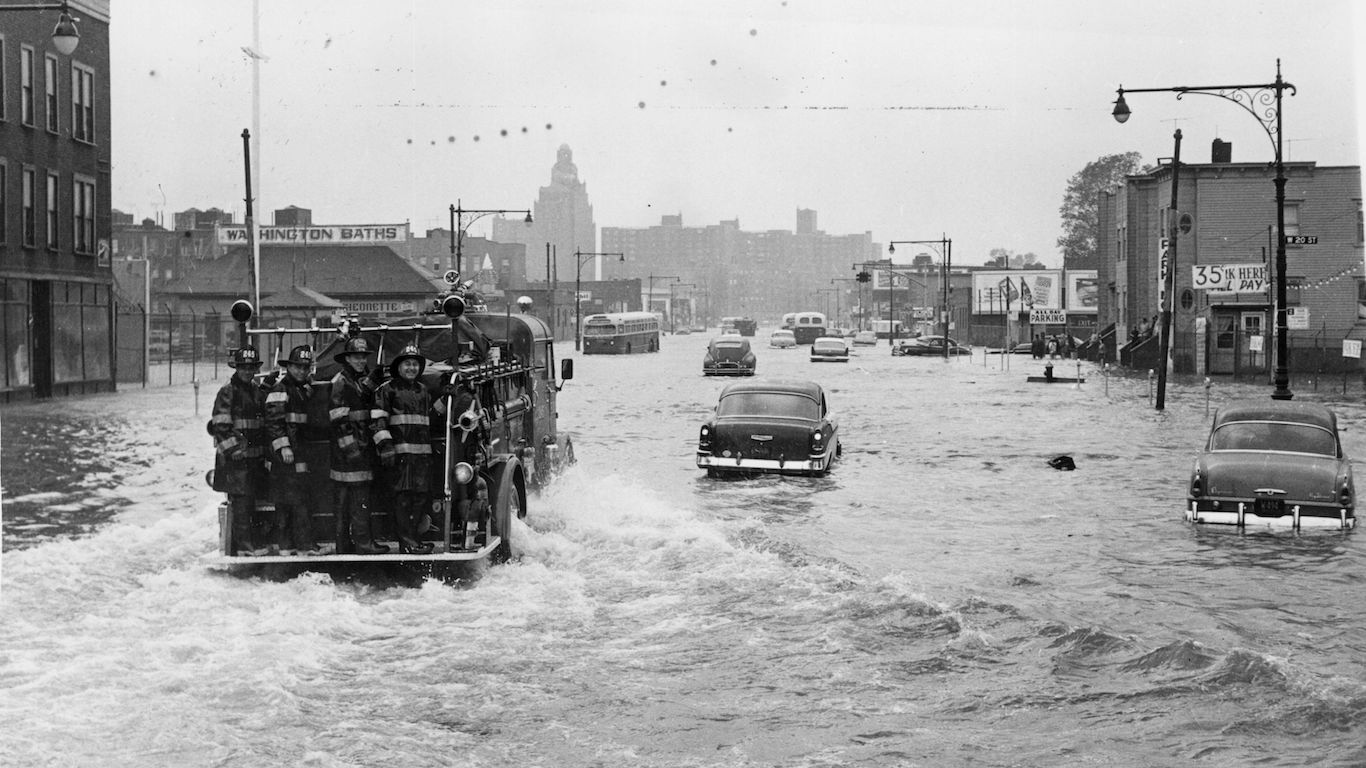
15. Hurricane Donna (September, 1960)
> Minimum pressure millibars: 930
> Max. wind speed at landfall: 125 mph
> Max. wind speed measured: 125 mph
> Affected area: Puerto Rico, Bahamas, Leeward Islands, mid-Atlantic states, New England, Florida

14. “The Great Miami Hurricane” (September, 1926)
> Minimum pressure millibars: 930
> Max. wind speed at landfall: 125 mph
> Max. wind speed measured: 130 mph
> Affected area: Turks Island, Bahamas, Florida, Louisiana
[in-text-ad-2]

13. “The Great Okeechobee Hurricane” (September, 1928)
> Minimum pressure millibars: 929
> Max. wind speed at landfall: 125 mph
> Max. wind speed measured: 140 mph
> Affected area: Leeward Islands, Bahamas, Puerto Rico, Florida
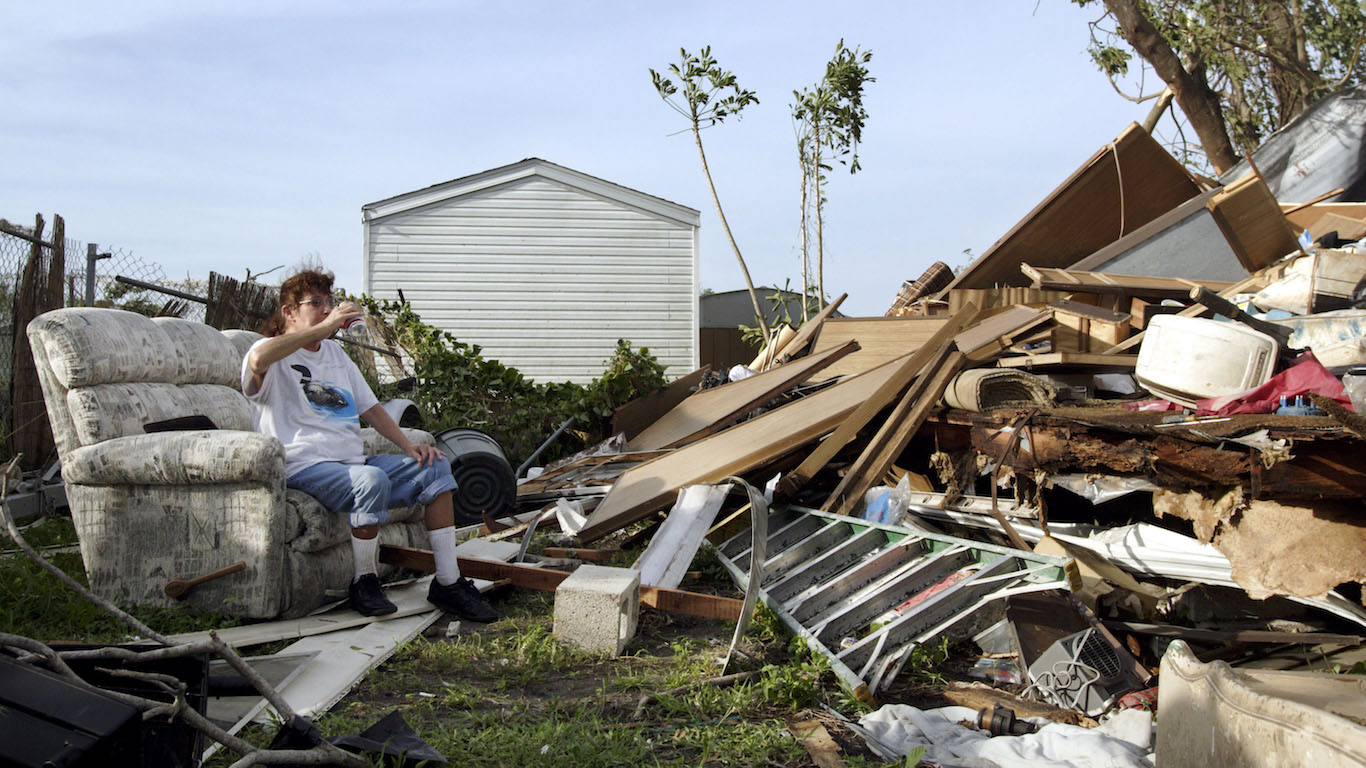
12. Hurricane Wilma (October, 2005)
> Minimum pressure millibars: 927
> Max. wind speed at landfall: 130 mph
> Max. wind speed measured: 160 mph
> Affected area: Jamaica, Grand Cayman Island, eastern Mexico, Florida
11. “The Florida Keys Hurricane” (September, 1919)
> Minimum pressure millibars: 927
> Max. wind speed at landfall: 130 mph
> Max. wind speed measured: 130 mph
> Affected area: Dominican Republic, Bahamas, Florida Keys, southeastern Texas
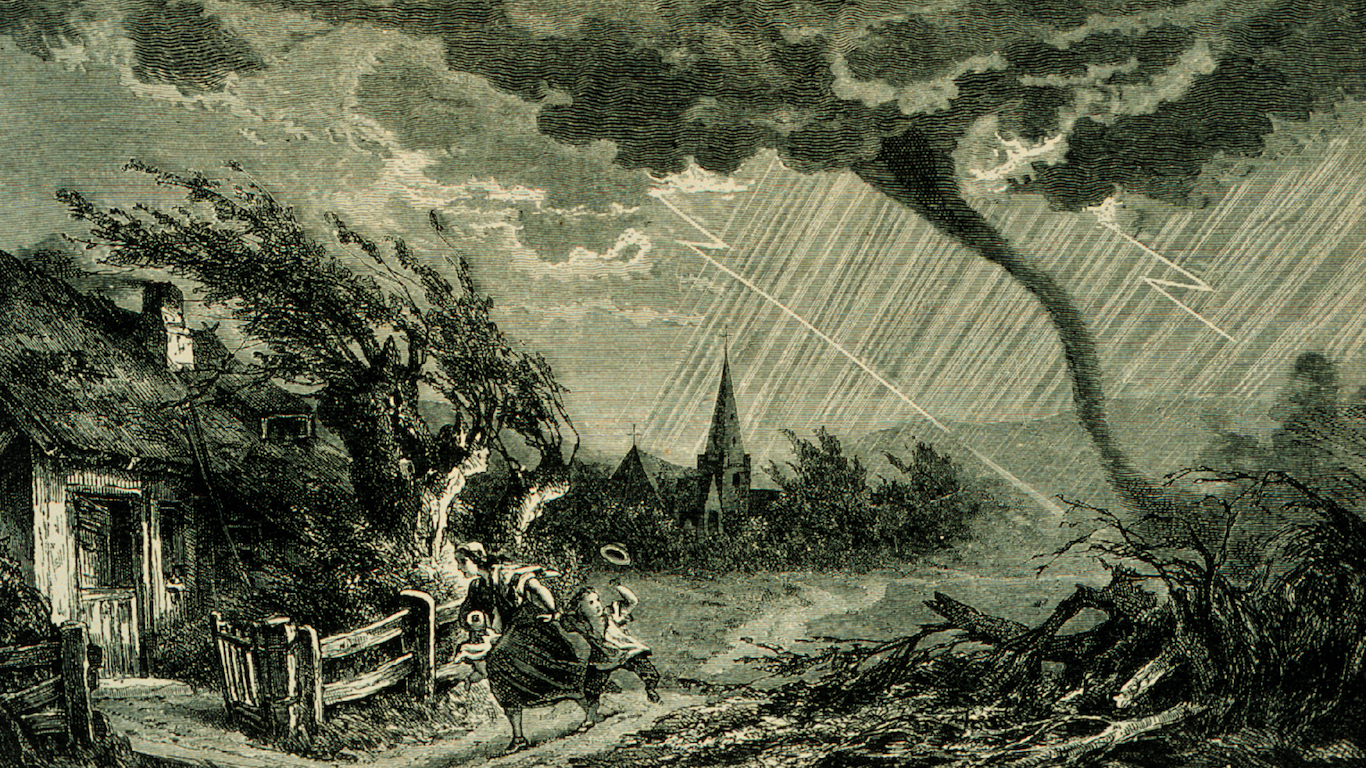
10. “The Great Indianola Hurricane” (August, 1886)
> Minimum pressure millibars: 925
> Max. wind speed at landfall: 130 mph
> Max. wind speed measured: 130 mph
> Affected area: Southeastern Texas
[in-text-ad]

9. Hurricane Andrew (August, 1992)
> Minimum pressure millibars: 922
> Max. wind speed at landfall: 145 mph
> Max. wind speed measured: 150 mph
> Affected area: Bermuda, Puerto Rico, Florida, Louisiana
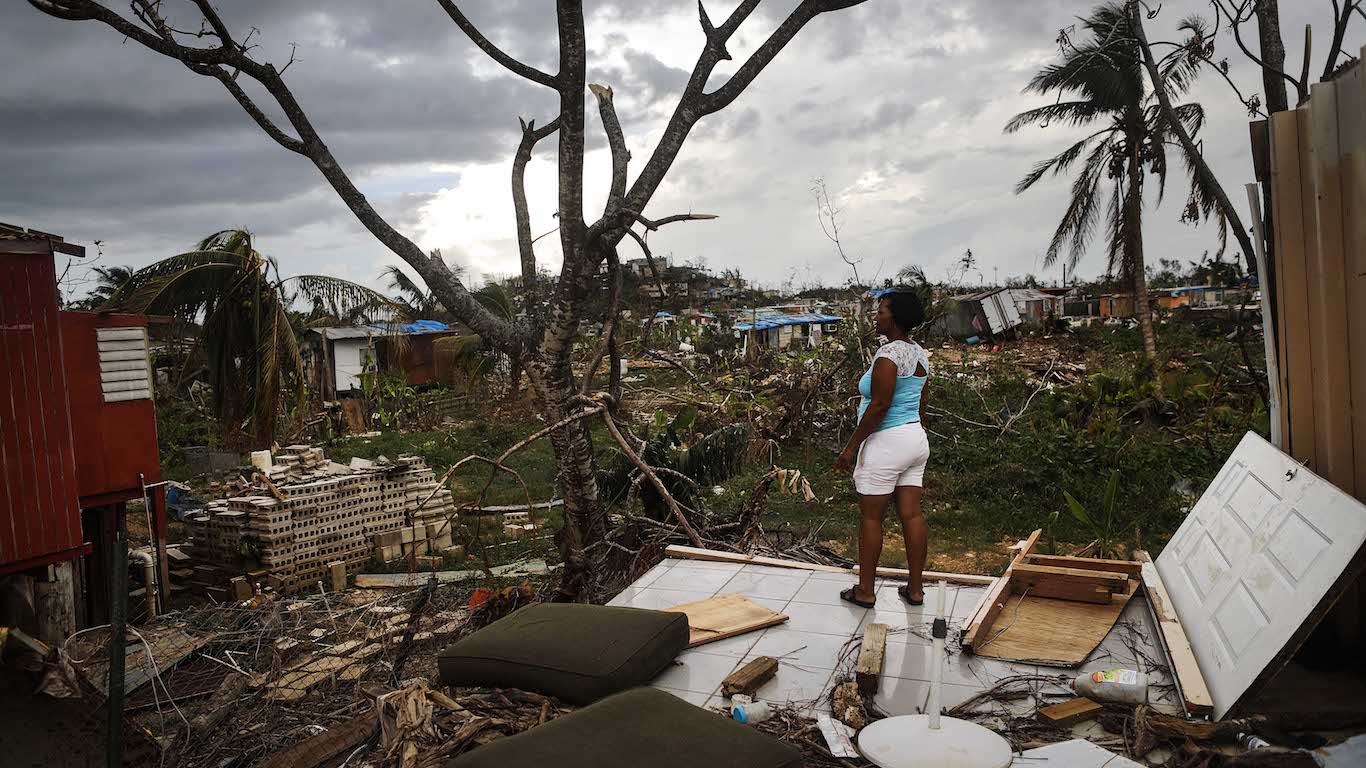
8. Hurricane Maria (September, 2017)
> Minimum pressure millibars: 920
> Max. wind speed at landfall: 135 mph
> Max. wind speed measured: 150 mph
> Affected area: Puerto Rico, northeastern Caribbean islands
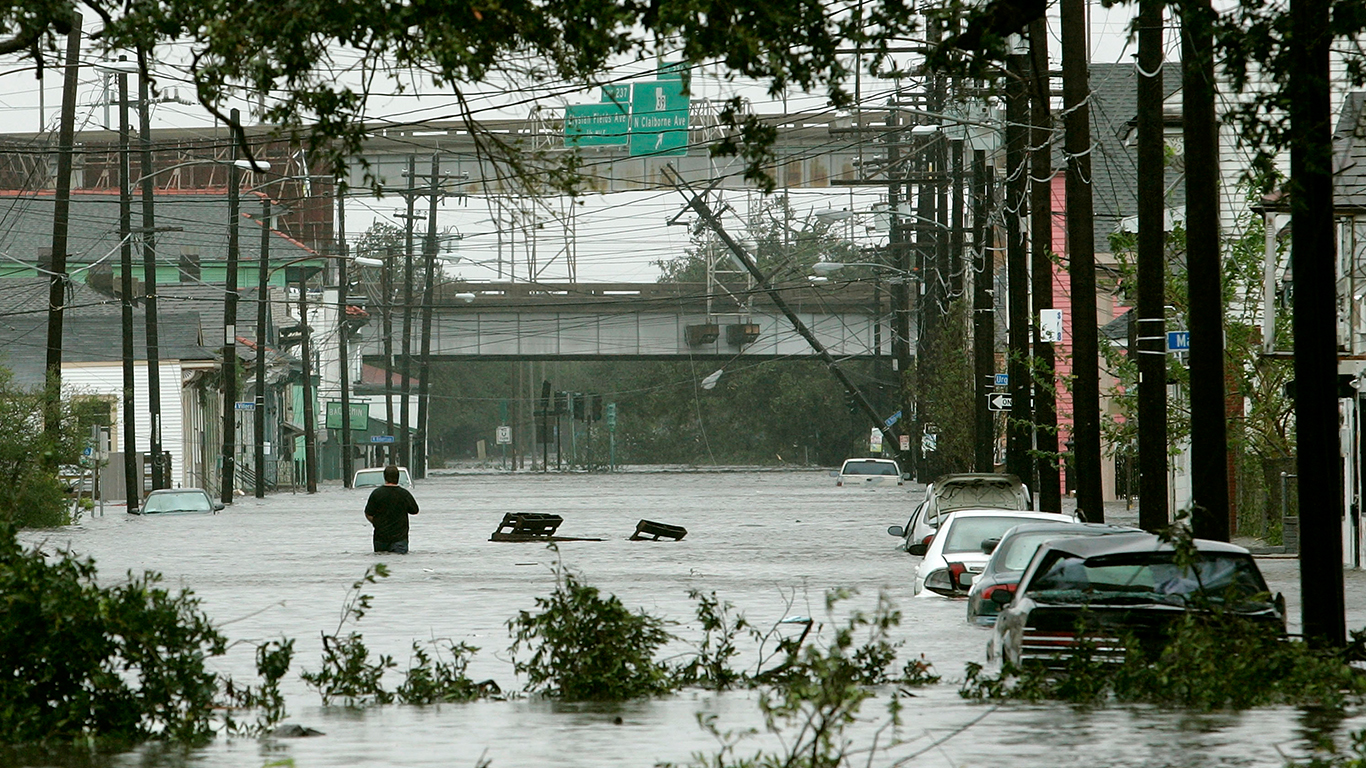
7. Hurricane Katrina (August, 2005)
> Minimum pressure millibars: 920
> Max. wind speed at landfall: 110 mph
> Max. wind speed measured: 150 mph
> Affected area: Louisiana, Mississippi, Alabama

6. Hurricane Irma (September, 2017)
> Minimum pressure millibars: 914
> Max. wind speed at landfall: 155 mph
> Max. wind speed measured: 155 mph
> Affected area: Caribbean islands, Florida
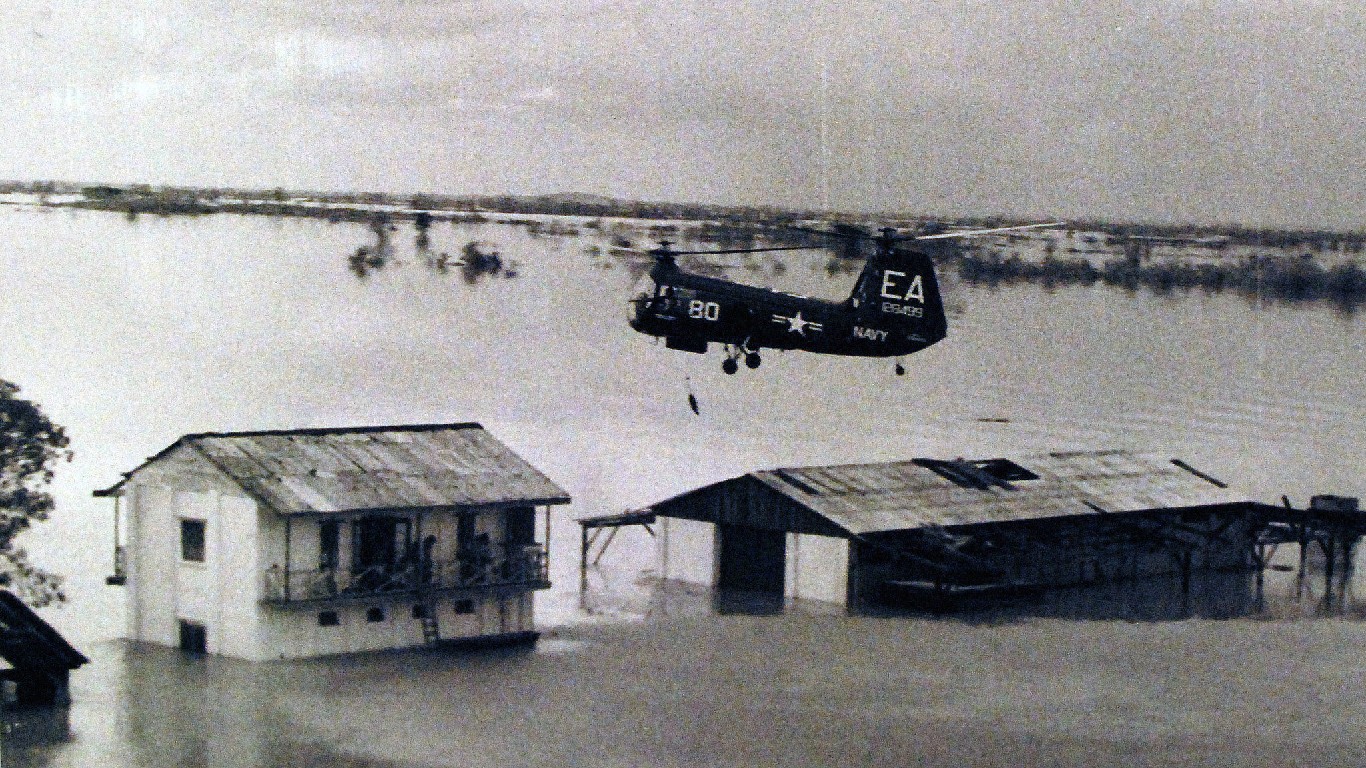
5. Hurricane Janet (September, 1955)
> Minimum pressure millibars: 914
> Max. wind speed at landfall: 150 mph
> Max. wind speed measured: 150 mph
> Affected area: Caribbean islands, Mexico
4. Hurricane Dean (August, 2007)
> Minimum pressure millibars: 905
> Max. wind speed at landfall: 150 mph
> Max. wind speed measured: 150 mph
> Affected area: Jamaica, eastern Mexico,
[in-text-ad-2]

3. Hurricane Gilbert (September, 1988)
> Minimum pressure millibars: 900
> Max. wind speed at landfall: 140 mph
> Max. wind speed measured: 160 mph
> Affected area: Caribbean islands, Central America, parts of U.S.

2. Hurricane Camille (August, 1969)
> Minimum pressure millibars: 900
> Max. wind speed at landfall: 150 mph
> Max. wind speed measured: 150 mph
> Affected area: Cuba, southern U.S.
1. “The Labor Day Storm” (September, 1935)
> Minimum pressure millibars: 892
> Max. wind speed at landfall: 160 mph
> Max. wind speed measured: 160 mph
> Affected area: Andros Island, Florida Keys
Detailed Findings
The most intense hurricanes as measured by minimum central pressure are not necessarily the deadliest or costliest storms. In most cases, the amount of damage caused by a hurricane does not only depend on its intensity but also on the amount and value of property at risk in the storm’s path. Much of the damage caused by the costliest hurricanes was caused by inland flooding triggered by torrential rain. Many of the deadliest and most expensive hurricanes made landfall in states along the Gulf Coast, where the infrastructure and economies of major cities are based on proximity to oceans and rivers.
Many of the largest hurricane death tolls resulted from storm surges that caused the ocean level to rise 10 feet or higher. In the Great Galveston Hurricane in 1900, the deadliest tropical cyclone in U.S. history, a storm surge covered all of Galveston Island off the Texas Gulf Coast in 8 to 12 feet of water, destroying nearly all buildings in the vicinity and leading to the deaths of possibly 8,000 people by drowning or being crushed by debris.
While hurricanes may be growing more intense and frequent, disaster preparedness also is becoming more effective. Hurricane forecasting has advanced considerably over the last century and advanced warning has helped minimize the deadliness of many of the most powerful storms of the last several decades. Excluding 2005 — the year Hurricane Katrina directly killed about 1,200 people — the 10 years with the highest hurricane-caused death counts are all before 1960. Excluding Katrina, NOAA has reported 1,300 deaths caused by hurricanes since 1960, compared with 14,645 deaths reported between 1900 and 1960.
While hurricanes are becoming less deadly as damage mitigation strategies and disaster preparedness improve, they are also becoming more destructive. The 10 costliest hurricanes have all occurred since 1992. This may be partially because of the increased amount of property at risk today in comparison with previous decades. Adjusted for inflation, the costliest hurricanes in U.S. history were Hurricane Katrina in 2005, Hurricanes Harvey and Irma in 2017, Hurricane Andrew in 1992, and Hurricane Ike in 2008.
Tropical cyclone activity in the Atlantic Ocean often peaks in the late summer, when the temperature differences between the wind and sea surface are the greatest. Of the 70 most intense hurricanes since 1851, 63 occurred in August, September, or October.
Methodology
To identify the most powerful hurricanes, 24/7 Wall St. reviewed the National Oceanic and Atmospheric Administration’s hurricane database (HURDAT 2), which tracks the date, time, location, minimum pressure (in millibars) and wind data for hurricane episodes from 1851 to 2019. Hurricanes were ranked according to their minimum pressure in millibars, where one millibar is the equivalent of 100 pascals in pressure. The lower a storm’s minimum pressure, the stronger the storm is. For context, air pressure is 1,013 millibars at sea level.
The thought of burdening your family with a financial disaster is most Americans’ nightmare. However, recent studies show that over 100 million Americans still don’t have proper life insurance in the event they pass away.
Life insurance can bring peace of mind – ensuring your loved ones are safeguarded against unforeseen expenses and debts. With premiums often lower than expected and a variety of plans tailored to different life stages and health conditions, securing a policy is more accessible than ever.
A quick, no-obligation quote can provide valuable insight into what’s available and what might best suit your family’s needs. Life insurance is a simple step you can take today to help secure peace of mind for your loved ones tomorrow.
Click here to learn how to get a quote in just a few minutes.
Thank you for reading! Have some feedback for us?
Contact the 24/7 Wall St. editorial team.